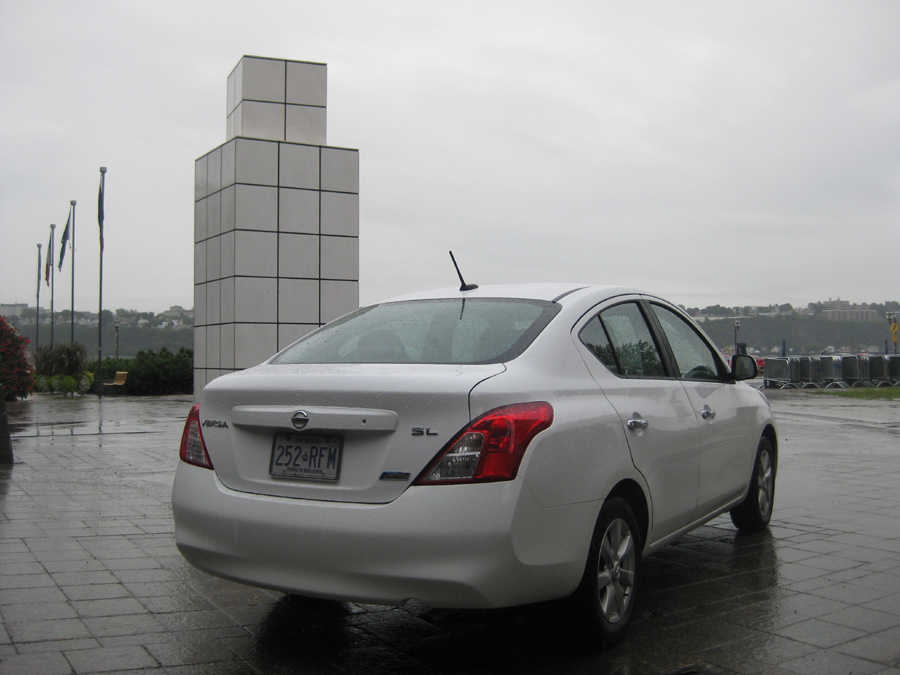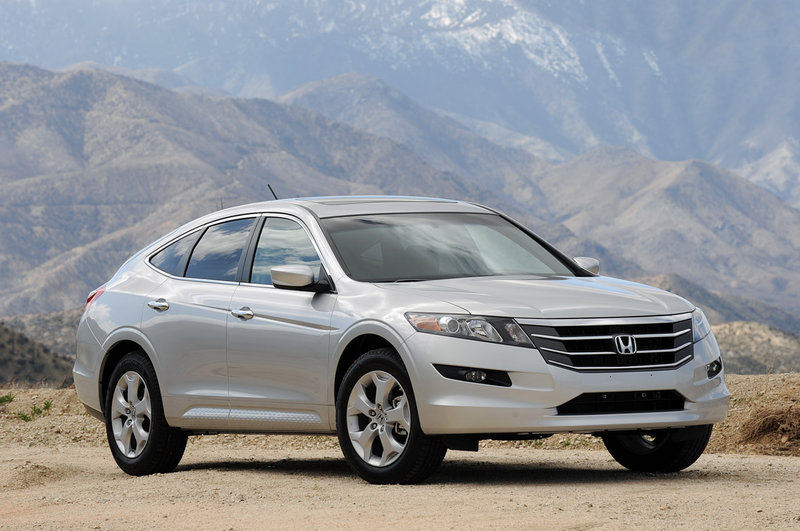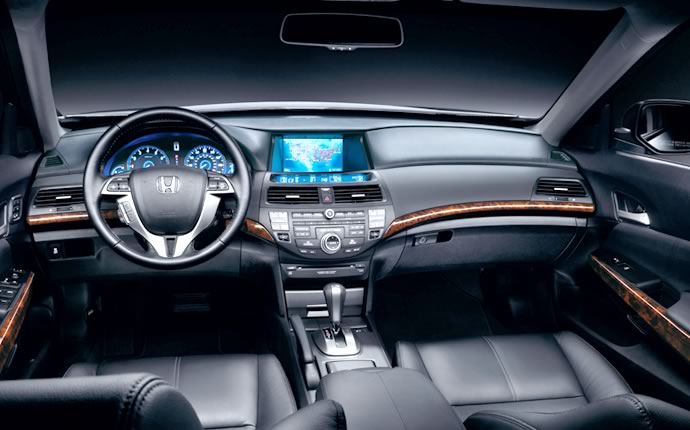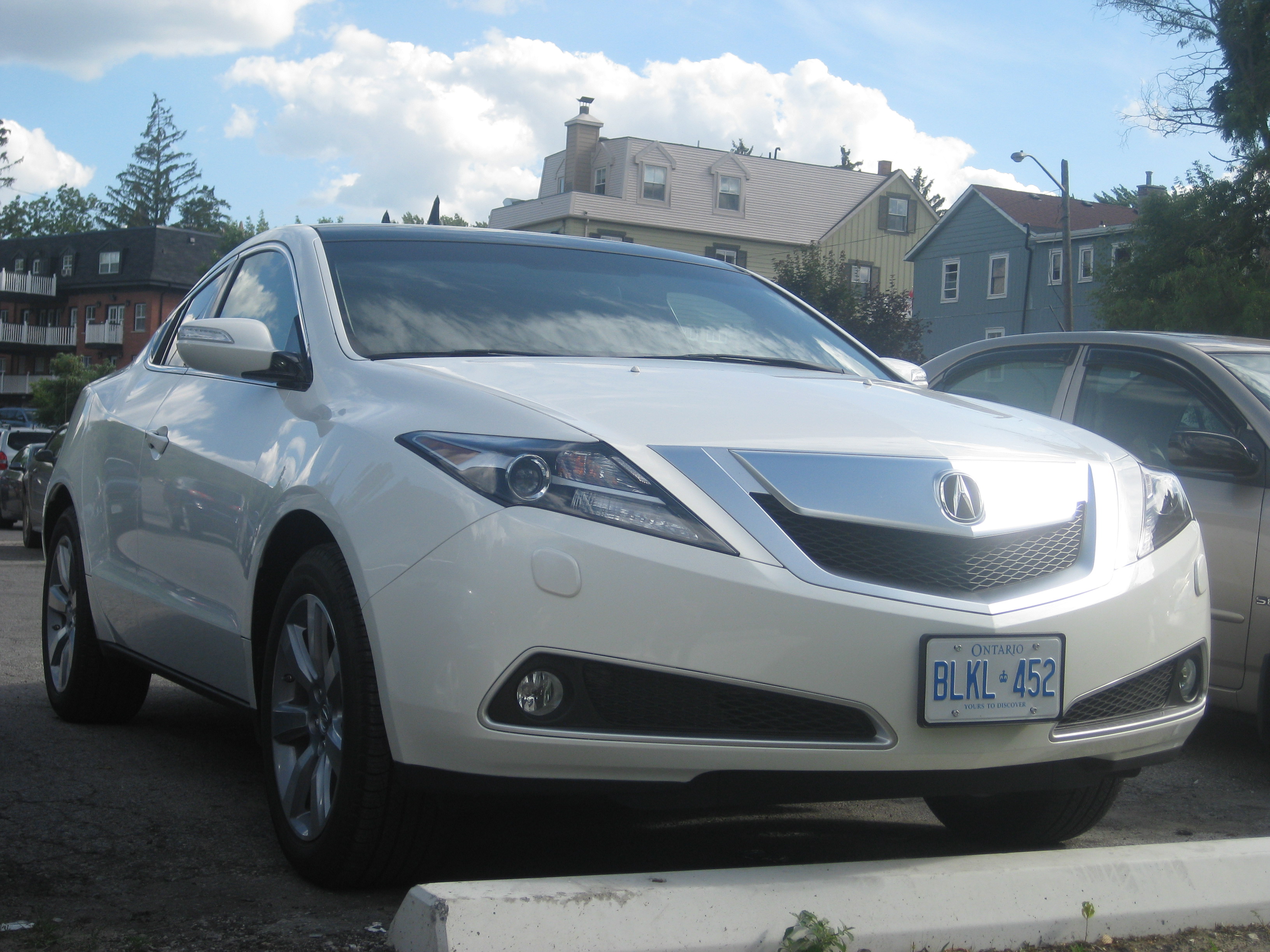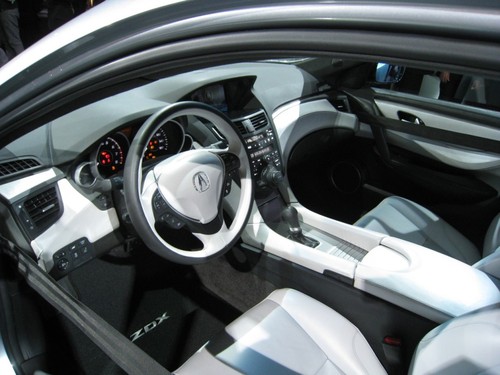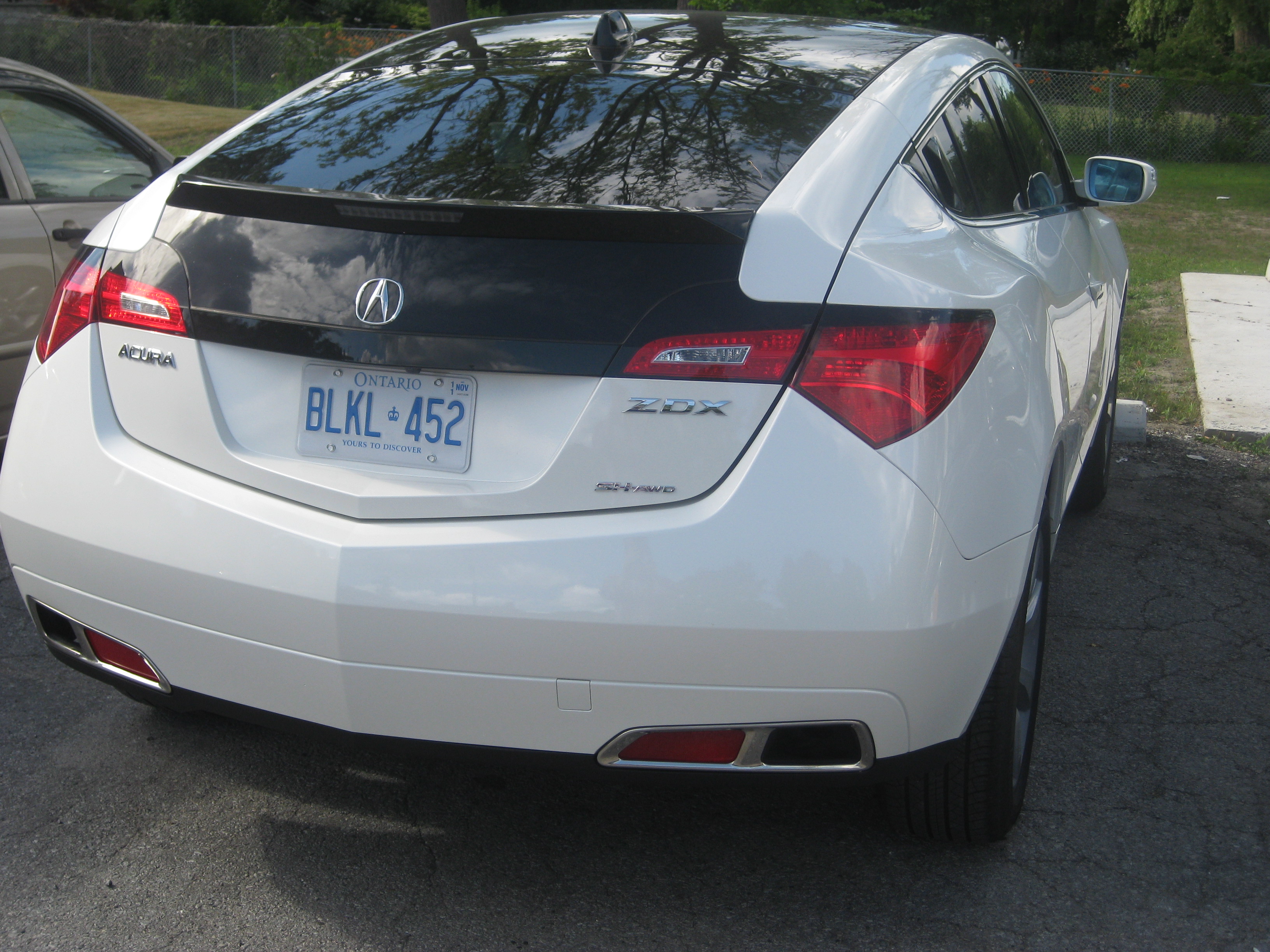Extreme Makeover: Ford Focus 2012 Edition
 There was a lot of anticipation surrounding the all-new 2012 Ford Focus. It's been a long time in the works, and an opportunity for Ford to rejuvenate a vehicle that has seen better days.
There was a lot of anticipation surrounding the all-new 2012 Ford Focus. It's been a long time in the works, and an opportunity for Ford to rejuvenate a vehicle that has seen better days.
Ford's new approach to the subcompact segment started with the launch of the Fiesta in early 2011, which was shortly followed by the Focus. Previous generations of the Focus were "North Americanized" and differed from their European counterparts, which were spoiled with a superior interior, more size, and a sleeker design. Not so this time around: the 2012 conforms to an international design, with just a few tweaks for regional preferences (such as MyFord Touch). 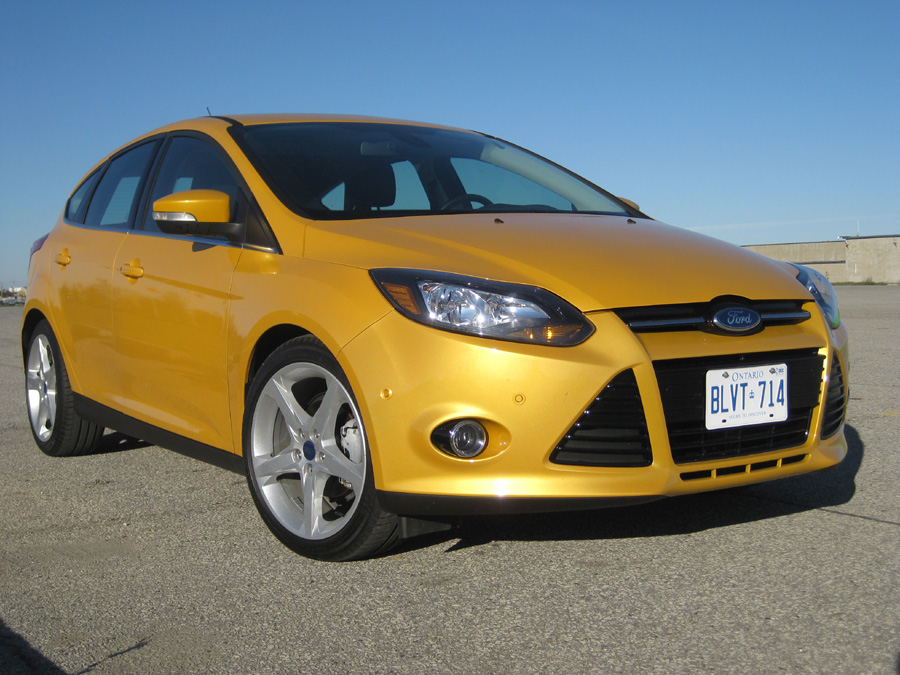 My tester for the week was the Focus Titanium hatchback, which came in a vibrantly yellow, blaze-metallic colour. The five-door-hatchback iteration of the Focus was last seen in 2007, but it clearly never should have been retired since the hatch adds character and appeals to the younger demographic.
My tester for the week was the Focus Titanium hatchback, which came in a vibrantly yellow, blaze-metallic colour. The five-door-hatchback iteration of the Focus was last seen in 2007, but it clearly never should have been retired since the hatch adds character and appeals to the younger demographic.
When I first put eyes on the Focus Titanium hatchback, I felt like I was looking at a contestant on one of those makeover shows – I've only heard about them – where a European designer has carte blanche to go to town on middle-aged housewives that have let themselves go. The new Focus is no housewife, but it's also nothing like its predecessor. The new look, feel, and design makes this vehicle a hot commodity in the subcompact segment. Ford's emphasis was on design, and it's paid off in the Focus's sportier lines, curvaceous body, and overall appeal. 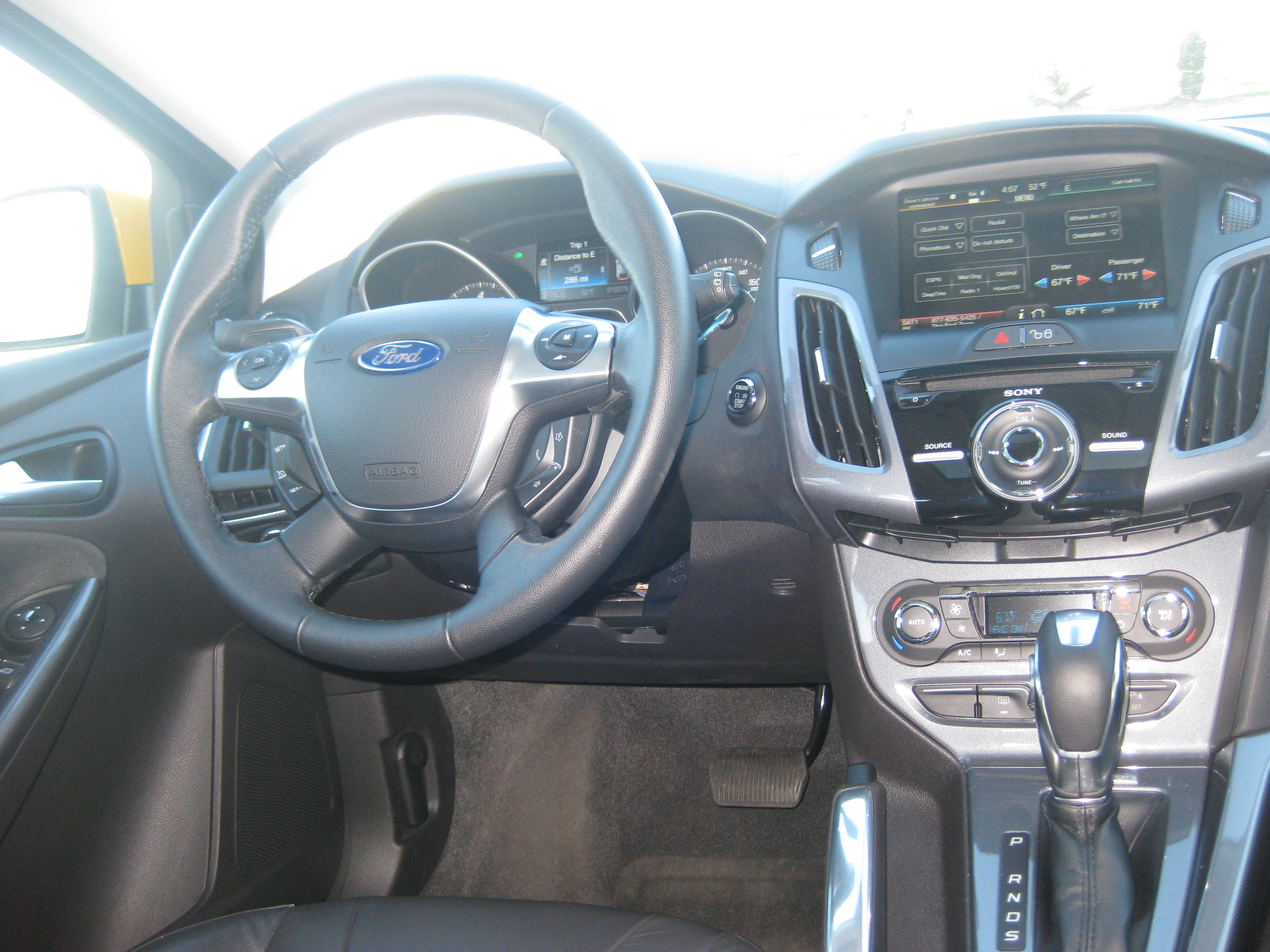 And the Focus's good looks are not just skin deep: the interior is also sensational. The two-tone front leather seats are comfortable and have power height and recline functions. A plush, soft-touch plastic surrounds the front cabin and centre console, which houses the MyFord Touch screen. The gadgets read like a laundry list, including an engine start-up button, a rear-view camera for reversing, side mirrors with blind-spot-indicator lights, heated seats, a sunroof, XM radio, and navigation. But the most interesting gadget of all has to be the Active Park Assist, which – lo and behold – allows you to manoeuvre the Focus into a parking spot at the push of a button.
And the Focus's good looks are not just skin deep: the interior is also sensational. The two-tone front leather seats are comfortable and have power height and recline functions. A plush, soft-touch plastic surrounds the front cabin and centre console, which houses the MyFord Touch screen. The gadgets read like a laundry list, including an engine start-up button, a rear-view camera for reversing, side mirrors with blind-spot-indicator lights, heated seats, a sunroof, XM radio, and navigation. But the most interesting gadget of all has to be the Active Park Assist, which – lo and behold – allows you to manoeuvre the Focus into a parking spot at the push of a button.
The Focus has also been transformed beneath the hood, with a 2.0-litre, direct-injected, four-cylinder engine. This baby commands 160 horses, 20 more than its predecessor, and 146 lb-ft of torque. Granted, these numbers aren't exactly earth shattering, but they are a marked improvement. The Focus provides two transmission options: a five-speed manual or a six-speed automatic with a manual shift option, the latter of which was in the tester. In automatic mode, the Focus is a little slow out of the gate, but acceleration is smooth once you start to cruise above 40 km/h. I wasn't impressed with the manual shift option, and I'm not sure how many people will have any use for it. It took a while simply to figure out how to get into manual mode, and, once there, switching gears feels awkward on account of the shifter's being too low.
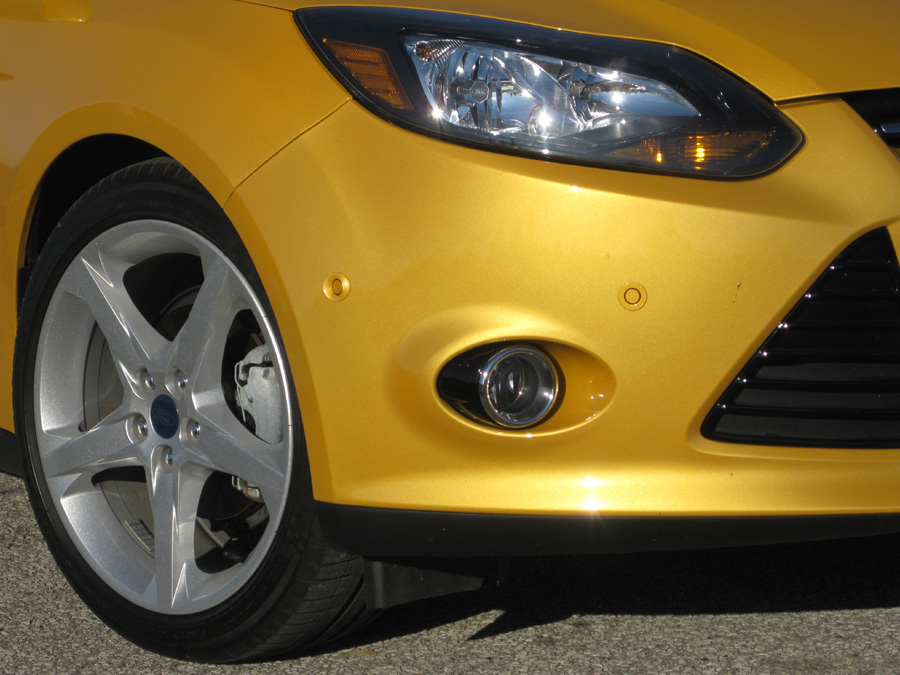
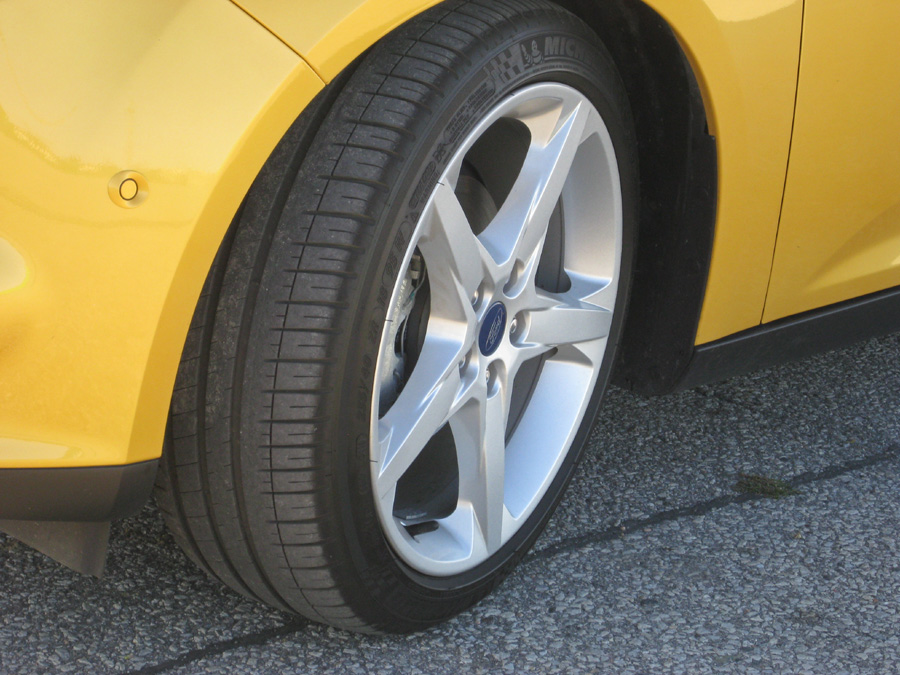
The steering is light and easy and seems to buff out the bumps on the road. The Focus may not have the upper hand on the Mazda 3 and Volkswagen Golf when it comes to power, but it does offset this imbalance with its fuel economy. After driving it throughout the city and on the highway for a week, the Focus averaged a combined 7.2 L/100 km, better than most of its rivals.
The Focus Titanium hatchback was in desperate need of a makeover, and it's now a real contender in the subcompact segment. It's a bit pricier than other cars in its segment, with the sedan starting at a base of $15,999 and the hatch at $19,899, but Ford has finally struck the right balance between design, gadgetry, and fuel economy to help it succeed.
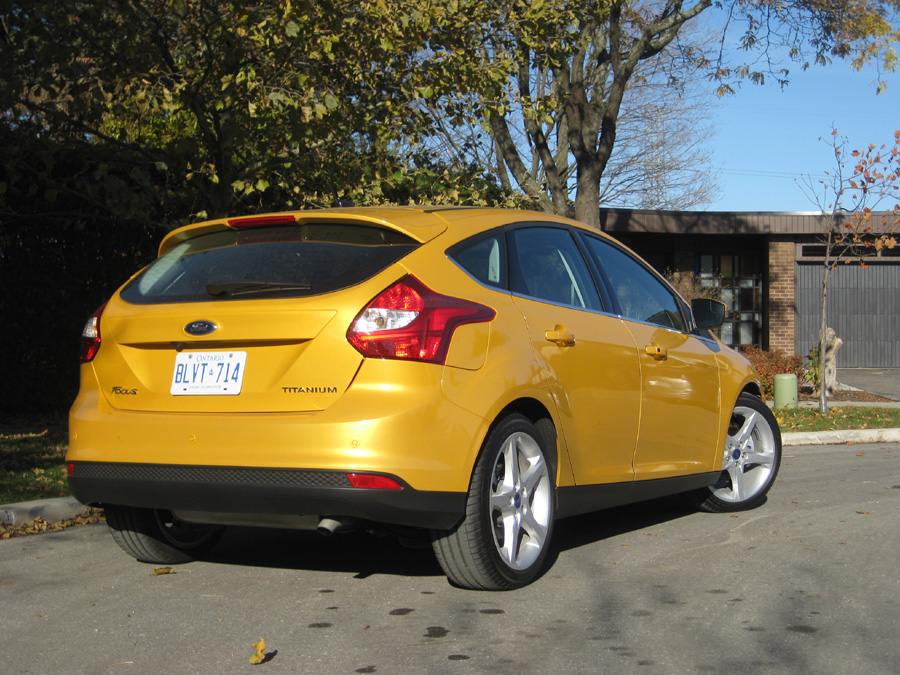
- 0
- Published in CAR REVIEWS
- Written by David Miller


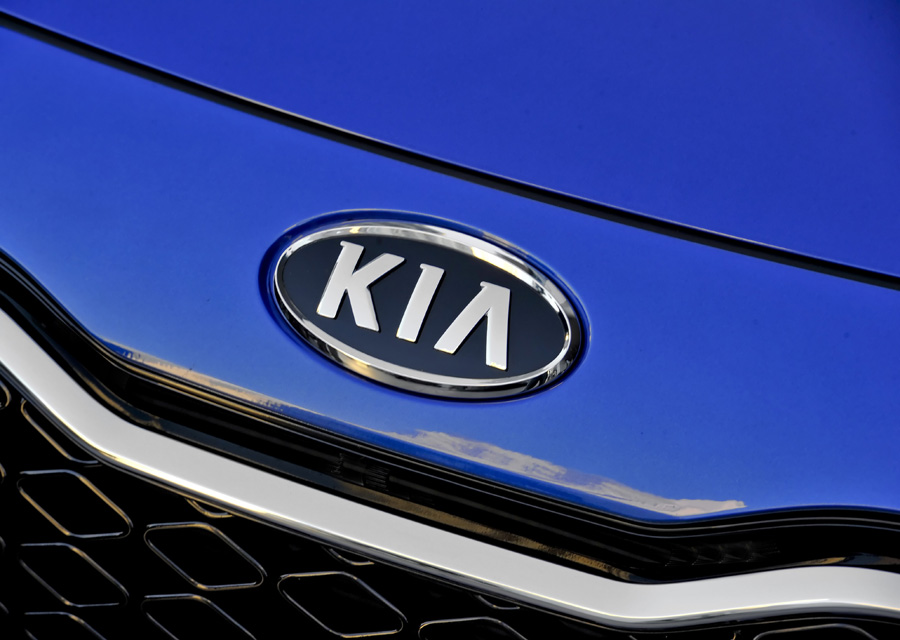 In the minds of some owners and industry observers, Kia has developed a reputation as a cheap, unreliable automaker. But since 2010, the Korean manufacturer has worked hard to rehabilitate their image and become a contender, redesigning the Forte, the Sportage, and the Sorento and offering all three at an affordable price. While continuing to produce low-priced vehicles, Kia also gives buyers as much value for their investment as their competitors in each segment, and maybe more.
In the minds of some owners and industry observers, Kia has developed a reputation as a cheap, unreliable automaker. But since 2010, the Korean manufacturer has worked hard to rehabilitate their image and become a contender, redesigning the Forte, the Sportage, and the Sorento and offering all three at an affordable price. While continuing to produce low-priced vehicles, Kia also gives buyers as much value for their investment as their competitors in each segment, and maybe more.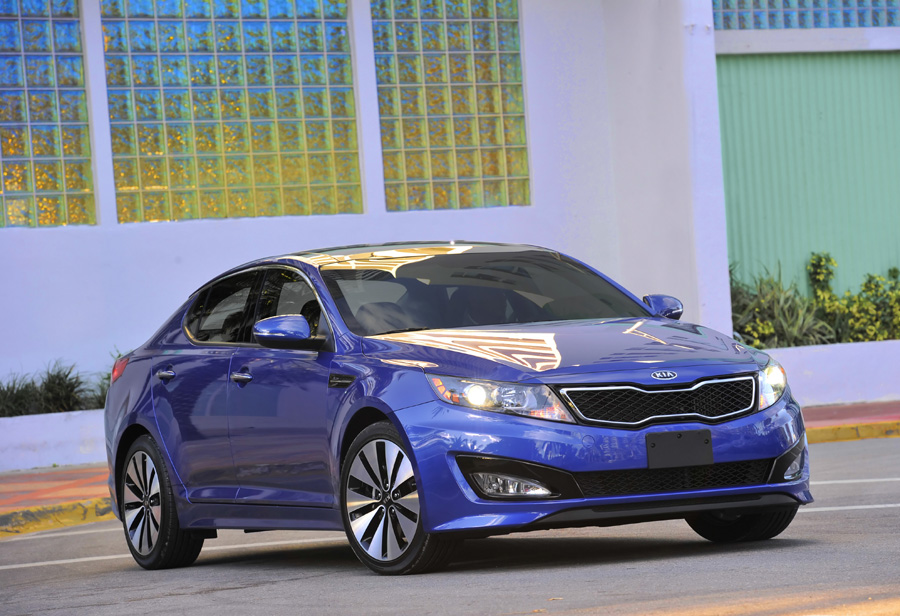 Throughout my week with the tester, several people approached me to ask what I was driving, and some of them couldn't believe the answer when I told them. I didn't blame them: it's hard to believe that Kia has come so far in such a short time, but, like Hyundai, they have made every effort to tap into what consumers really want: affordability, sleek and sporty design, and fuel efficiency. It's no fluke that Kia and Hyundai vehicles are all over the 2012 AJAC awards and up for best cars of the year.
Throughout my week with the tester, several people approached me to ask what I was driving, and some of them couldn't believe the answer when I told them. I didn't blame them: it's hard to believe that Kia has come so far in such a short time, but, like Hyundai, they have made every effort to tap into what consumers really want: affordability, sleek and sporty design, and fuel efficiency. It's no fluke that Kia and Hyundai vehicles are all over the 2012 AJAC awards and up for best cars of the year.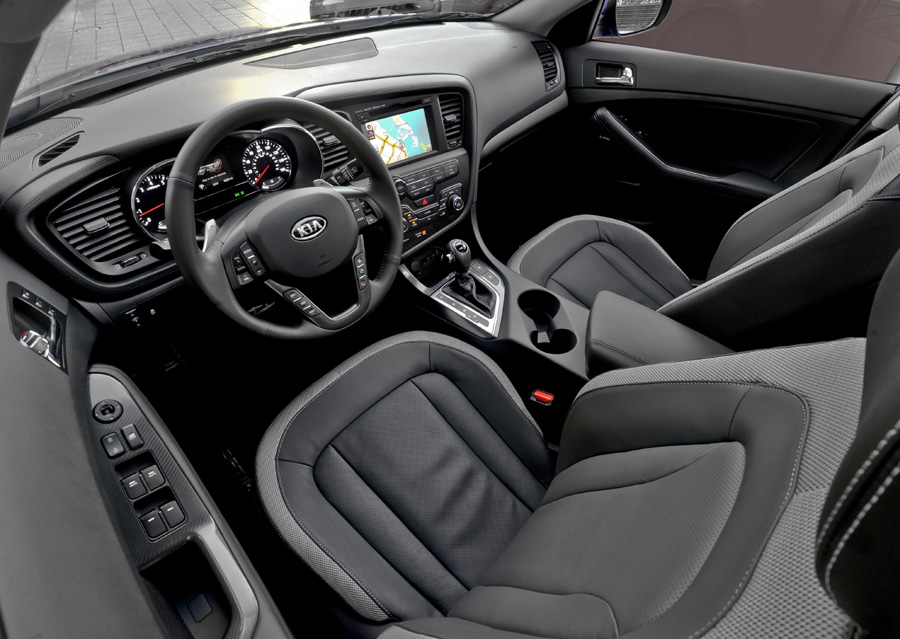 And the party doesn't stop with the exterior: the Optima's interior is just as exciting. Inside is a striking, soft-leather-wrapped steering wheel and bright aluminum pedals that are just begging to be pressed. The soft leather extends to the dash, creating an elegant look throughout the cockpit. The leather seats may be a little flashy for some, but their outer layer of silver mesh stitching complemented the racing-tone of the vehicle.
And the party doesn't stop with the exterior: the Optima's interior is just as exciting. Inside is a striking, soft-leather-wrapped steering wheel and bright aluminum pedals that are just begging to be pressed. The soft leather extends to the dash, creating an elegant look throughout the cockpit. The leather seats may be a little flashy for some, but their outer layer of silver mesh stitching complemented the racing-tone of the vehicle.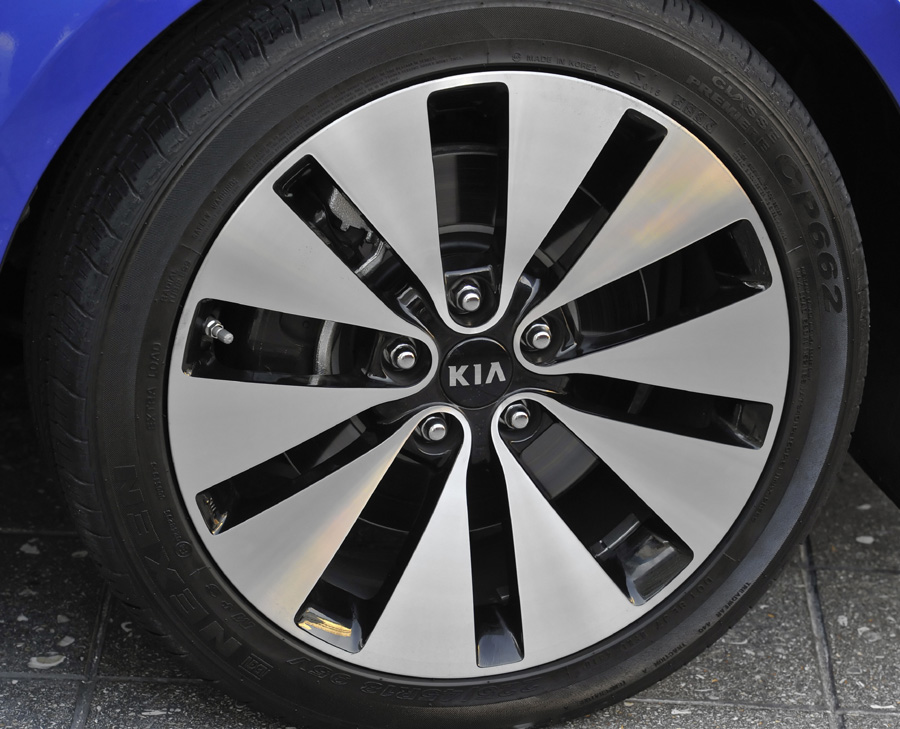 Kia's standard features, which include USB ports, Bluetooth, cruise control, and Sirius satellite radio, add even more value for the consumer. The SX is also outfitted with a push-button ignition, dual-zone and fully automatic climate control, a leather-wrapped steering wheel, an eight-speaker Infinity audio system, a reversing camera, a panoramic sunroof, and touch-screen navigation.
Kia's standard features, which include USB ports, Bluetooth, cruise control, and Sirius satellite radio, add even more value for the consumer. The SX is also outfitted with a push-button ignition, dual-zone and fully automatic climate control, a leather-wrapped steering wheel, an eight-speaker Infinity audio system, a reversing camera, a panoramic sunroof, and touch-screen navigation. 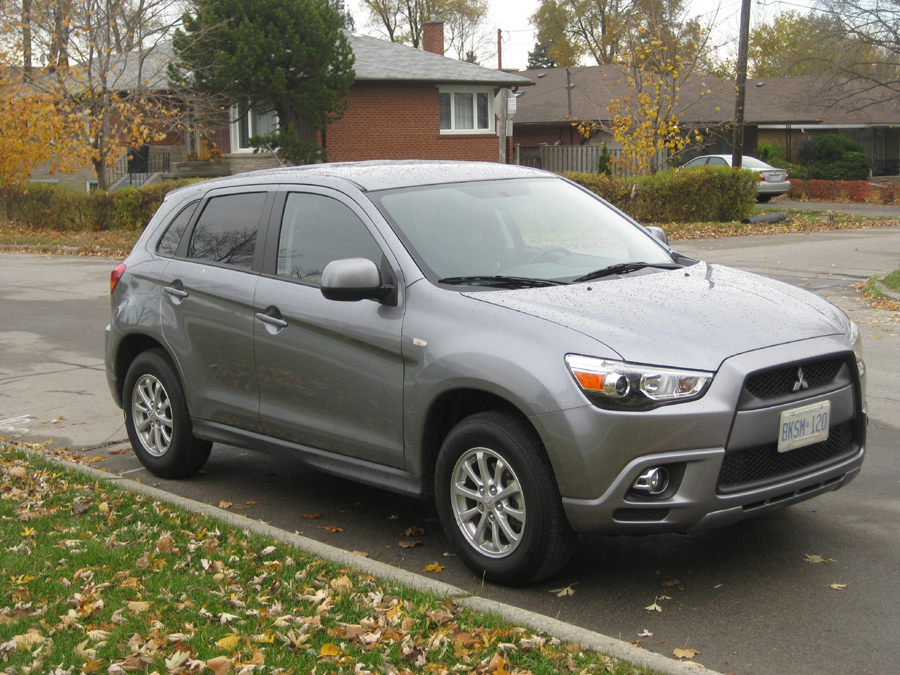 For the past few years, gas prices have risen so steadily that, for all the outrage we may feel, we’re no longer particularly surprised by the next hike. The days of paying less than a dollar for a litre of gas are gone. But for a family to be able to travel in comfort, the roominess of an SUV or CUV is necessary, which means that, short of investing in an electric vehicle, we as consumers must demand more compact, light-weight, fuel-efficient vehicles.
For the past few years, gas prices have risen so steadily that, for all the outrage we may feel, we’re no longer particularly surprised by the next hike. The days of paying less than a dollar for a litre of gas are gone. But for a family to be able to travel in comfort, the roominess of an SUV or CUV is necessary, which means that, short of investing in an electric vehicle, we as consumers must demand more compact, light-weight, fuel-efficient vehicles.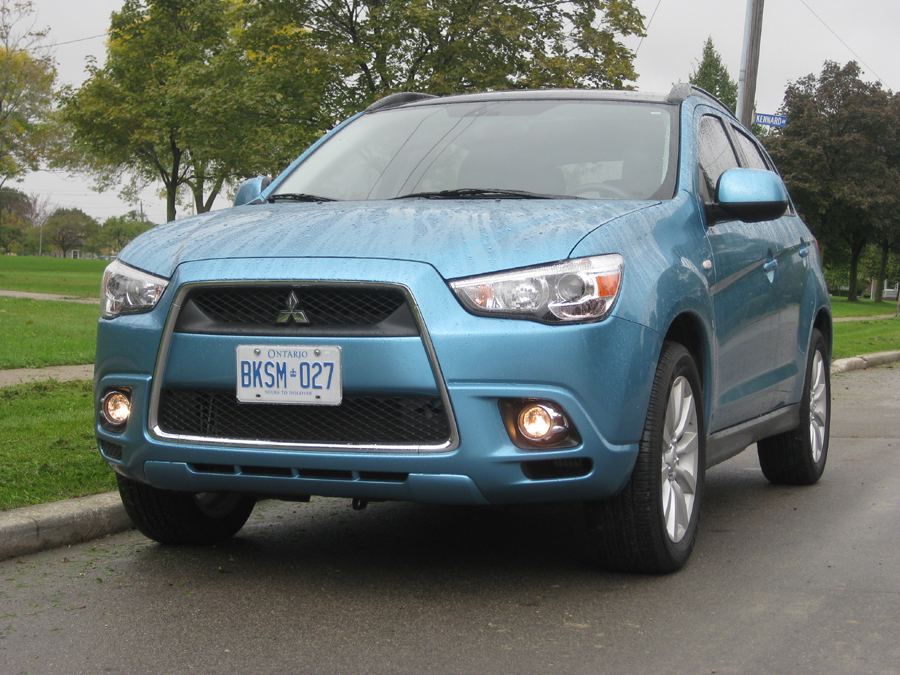 At first glance, the RVR is a head-turner, especially in the tester’s Kingfisher blue. The trapezoid grille with the Mitsubishi badge front and center stands out the most, giving the RVR a sporty look. The front of the vehicle is nicely complemented by a sporty exterior and a beautiful panoramic sunroof.
At first glance, the RVR is a head-turner, especially in the tester’s Kingfisher blue. The trapezoid grille with the Mitsubishi badge front and center stands out the most, giving the RVR a sporty look. The front of the vehicle is nicely complemented by a sporty exterior and a beautiful panoramic sunroof. Unfortunately, the RVR’s beauty is only skin deep. Inside the CUV, space is ample and seating plush and comfortable, but all the plastic in the dash will make you feel like you’re at a Tupperware party. I’m all for elegant simplicity of design, but the RVR’s drabness is almost oppressive. The interior of such a modern vehicle should be in keeping with the fun and excitement that its exterior conveys. Of course it’s not all bad: the steering wheel, sheathed in strong black leather that you can really grip down on, gives you the sense that you’re in complete control of the vehicle at all times. Similarly, the handling is silky smooth on turns, and overall traction and stability are excellent.
Unfortunately, the RVR’s beauty is only skin deep. Inside the CUV, space is ample and seating plush and comfortable, but all the plastic in the dash will make you feel like you’re at a Tupperware party. I’m all for elegant simplicity of design, but the RVR’s drabness is almost oppressive. The interior of such a modern vehicle should be in keeping with the fun and excitement that its exterior conveys. Of course it’s not all bad: the steering wheel, sheathed in strong black leather that you can really grip down on, gives you the sense that you’re in complete control of the vehicle at all times. Similarly, the handling is silky smooth on turns, and overall traction and stability are excellent.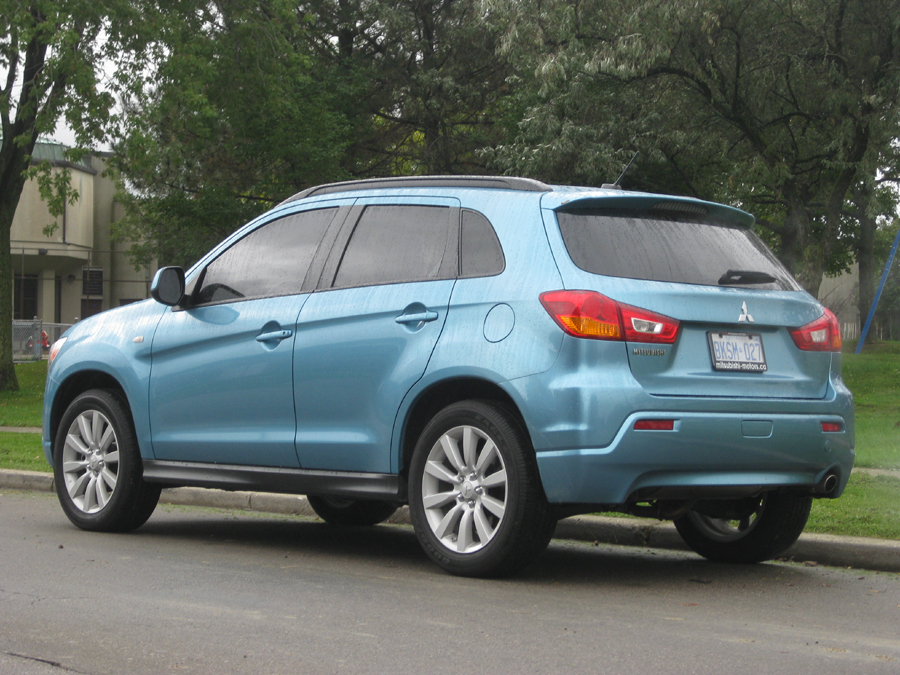
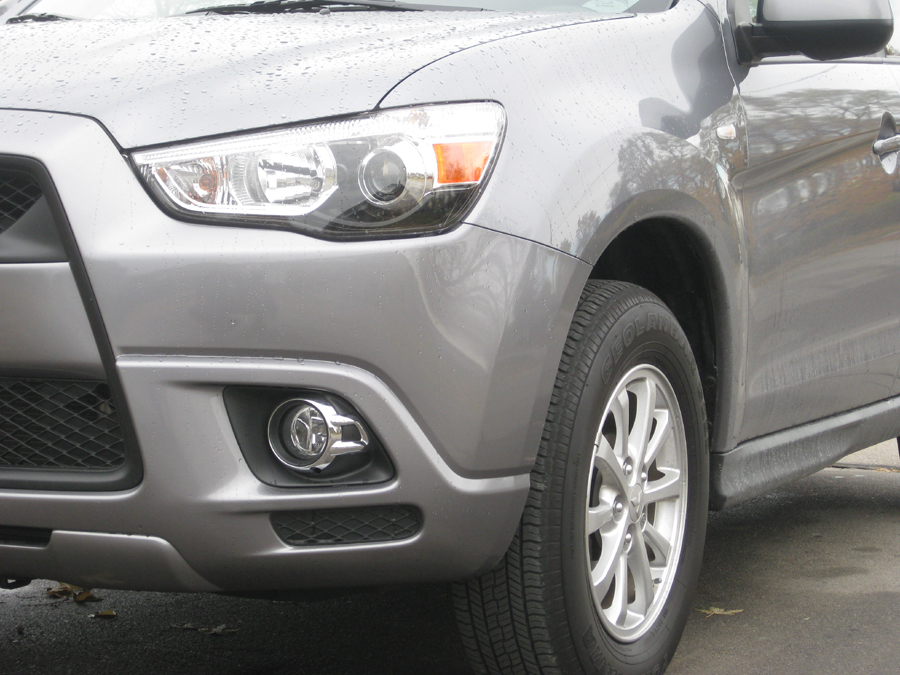 The manual RVR I tested was the second-level SE 2WD, which starts at $21.998, but the top-of-the-line GT 4WD starts at $28,498 and comes with an array of gadgets, including Bluetooth, USB ports, a tilting and telescoping steering wheel, rear privacy glass, cruise control, 18” aluminum alloy wheels, and a 710-watt Rockford Fosgate Punch premium sound system.
The manual RVR I tested was the second-level SE 2WD, which starts at $21.998, but the top-of-the-line GT 4WD starts at $28,498 and comes with an array of gadgets, including Bluetooth, USB ports, a tilting and telescoping steering wheel, rear privacy glass, cruise control, 18” aluminum alloy wheels, and a 710-watt Rockford Fosgate Punch premium sound system. 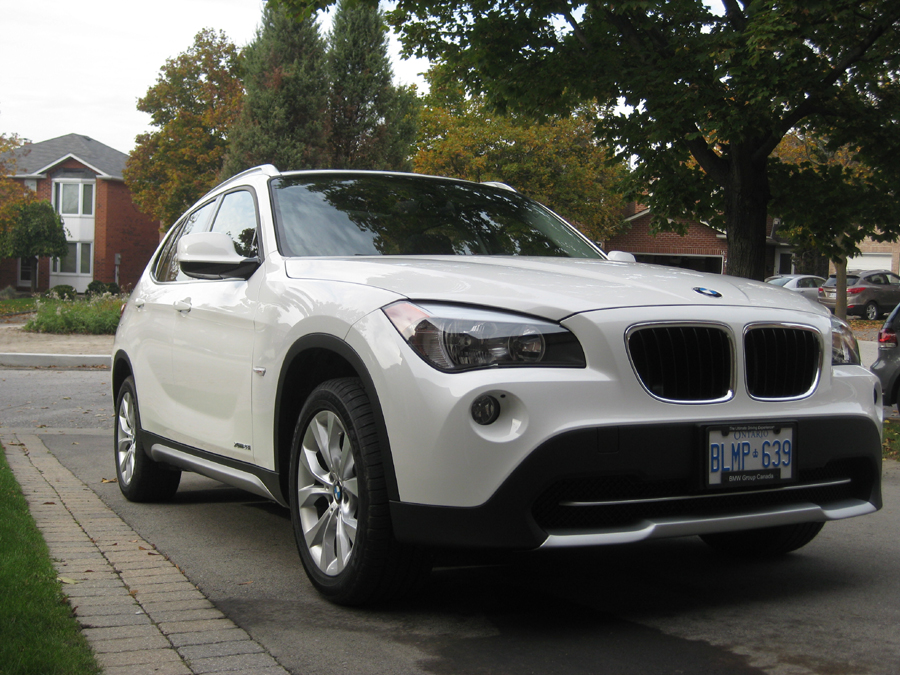 Like most auto makers, BMW is constantly pursuing new customers, but lately they seem particularly interested in going after buyers of brands they don’t ordinarily compete with. How? By making an affordable vehicle that will persuade customers to abandon the notion they can’t afford anything from a luxury maker.
Like most auto makers, BMW is constantly pursuing new customers, but lately they seem particularly interested in going after buyers of brands they don’t ordinarily compete with. How? By making an affordable vehicle that will persuade customers to abandon the notion they can’t afford anything from a luxury maker. 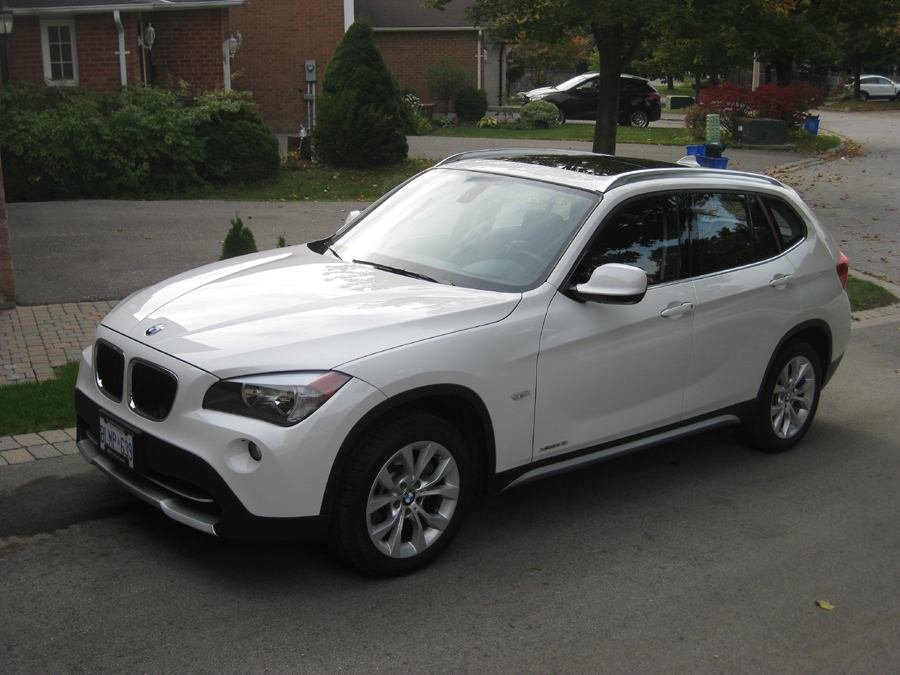 The X1 is difficult to pigeonhole, part SUV, part crossover, part wagon, part car, all spliced together. But inside it’s pure of heart: the 2.0 L inline four-cylinder engine boasts a twin-scroll turbocharger that churns out 241 hp and 258 lb-ft of torque. Its eight-speed automatic transmission gets the X1 up to 100 km in 6.6 seconds. The four-cylinder doesn’t give you the same grunt or as smooth a ride as the BMW inline-six does, but what you get in exchange is stellar fuel economy. The stats speak for themselves: 6.5 L/100 km on the highway, 10.2 L/100 km in the city.
The X1 is difficult to pigeonhole, part SUV, part crossover, part wagon, part car, all spliced together. But inside it’s pure of heart: the 2.0 L inline four-cylinder engine boasts a twin-scroll turbocharger that churns out 241 hp and 258 lb-ft of torque. Its eight-speed automatic transmission gets the X1 up to 100 km in 6.6 seconds. The four-cylinder doesn’t give you the same grunt or as smooth a ride as the BMW inline-six does, but what you get in exchange is stellar fuel economy. The stats speak for themselves: 6.5 L/100 km on the highway, 10.2 L/100 km in the city. 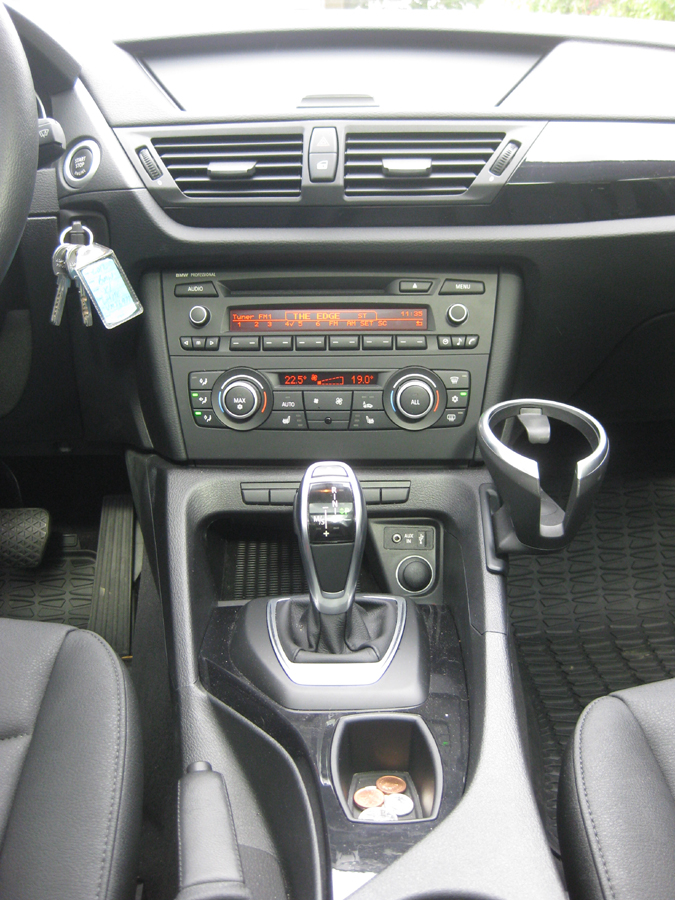 The eight-speed automatic transmission is the only option for the X1, but it does come with a manual shift mode, which allows you to really see what all eight-gears provide. Gear changes up or down were seamless, but while the serpentine gear shift is cool to look at, as in most BMWs it was a little tricky to use. In order to reverse, for instance, you need to push upward as opposed to down, which could get you into trouble if someone were to borrow your car.
The eight-speed automatic transmission is the only option for the X1, but it does come with a manual shift mode, which allows you to really see what all eight-gears provide. Gear changes up or down were seamless, but while the serpentine gear shift is cool to look at, as in most BMWs it was a little tricky to use. In order to reverse, for instance, you need to push upward as opposed to down, which could get you into trouble if someone were to borrow your car.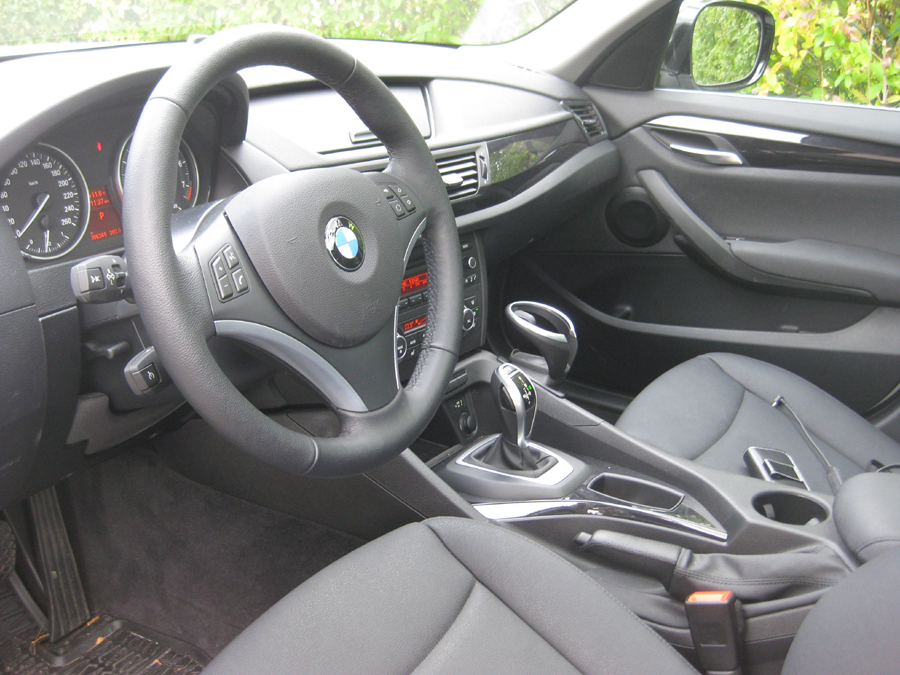
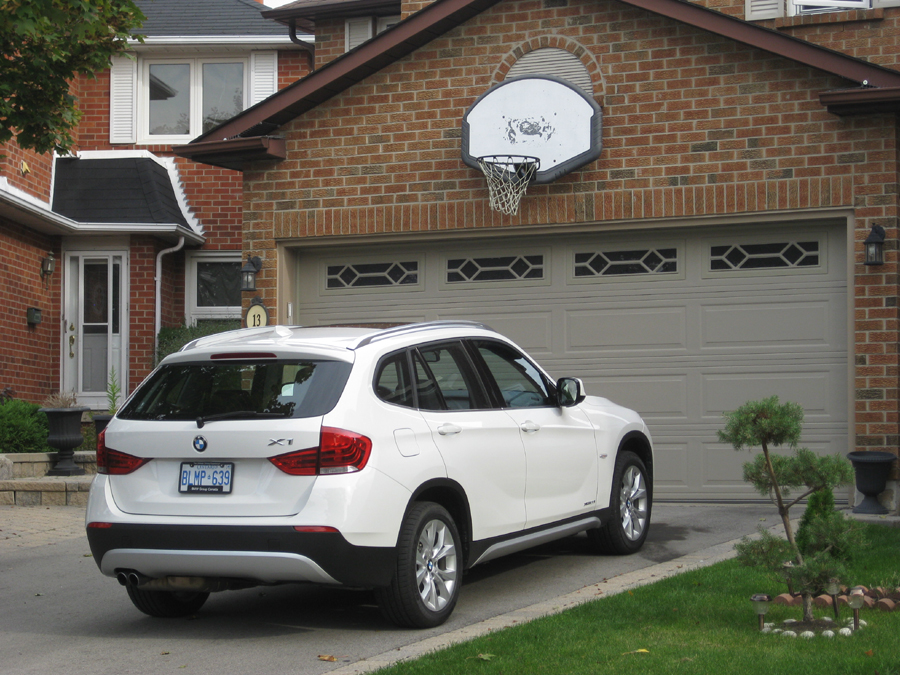
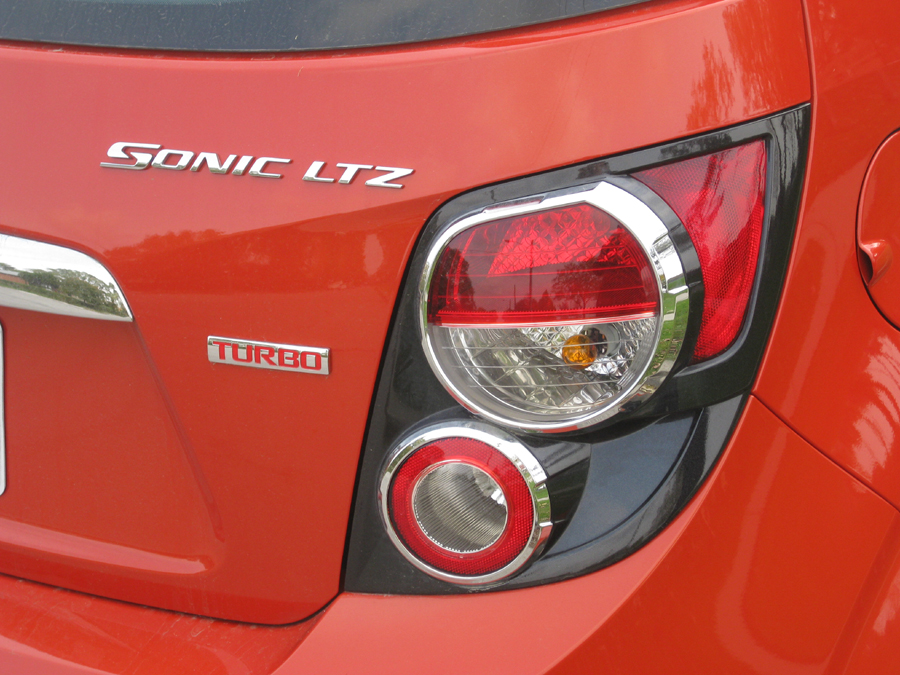 Over the past two years, the North American subcompact segment has heated up, with many manufacturers joining the fray. A lot of advertising dollars have been spent to boost sales, and experts are predicting that the segment will grow 30% over the next four years. Never content to watch from the sidelines, General Motors has been hard at work creating something worthwhile after repeated missteps over the years, most recently with the Aveo. With the new Chevy Sonic, they’ve finally achieved their goal.
Over the past two years, the North American subcompact segment has heated up, with many manufacturers joining the fray. A lot of advertising dollars have been spent to boost sales, and experts are predicting that the segment will grow 30% over the next four years. Never content to watch from the sidelines, General Motors has been hard at work creating something worthwhile after repeated missteps over the years, most recently with the Aveo. With the new Chevy Sonic, they’ve finally achieved their goal. My tester, the LTZ, boasted all that the Sonic has to offer and came in a blinding inferno-orange metallic colour. The Sonic has two incarnations, a four-door sedan and a five-door hatch – my LTZ was a hatch. The LTZ is available only with a six-speed manual transmission, but it seems likely that an automatic is in the works.
My tester, the LTZ, boasted all that the Sonic has to offer and came in a blinding inferno-orange metallic colour. The Sonic has two incarnations, a four-door sedan and a five-door hatch – my LTZ was a hatch. The LTZ is available only with a six-speed manual transmission, but it seems likely that an automatic is in the works.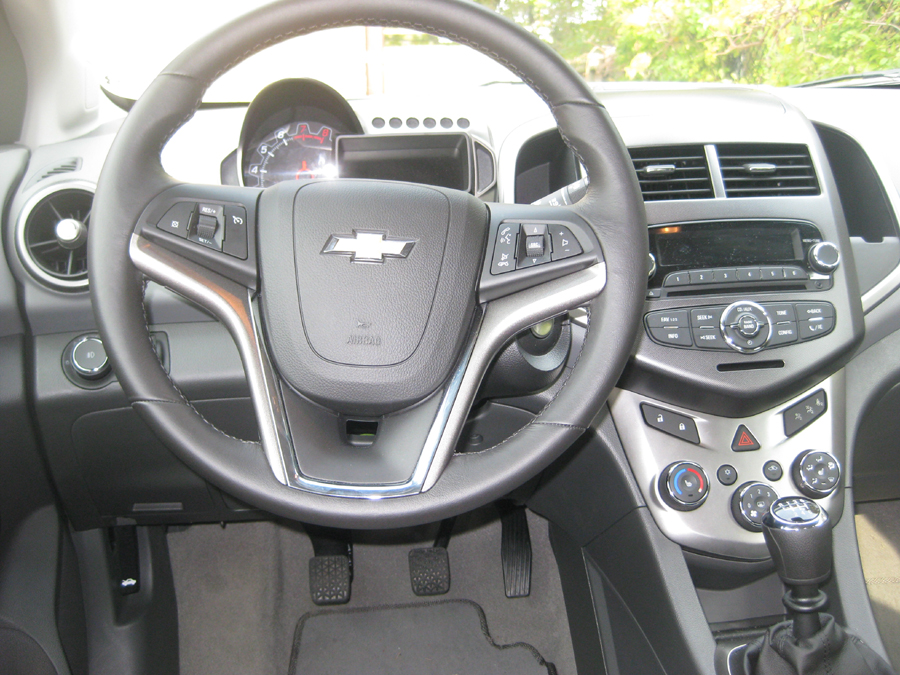
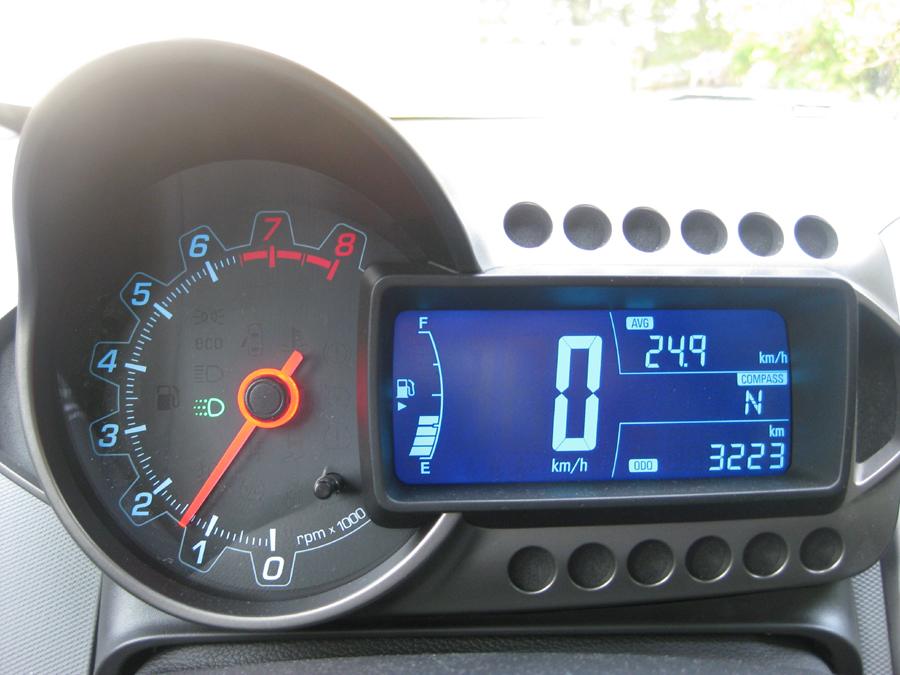
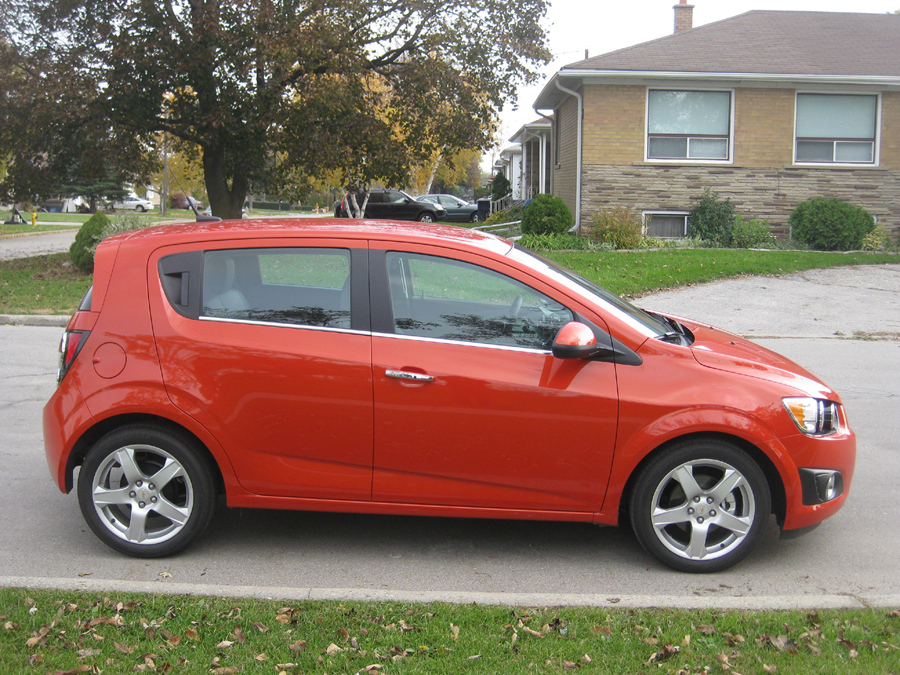
 The year 2011 has been a busy one for Hyundai. While many manufacturers have struggled with production delays and even closures, Hyundai’s been crafting sleek, reliable, and affordable vehicles for the average consumer. In Canada, Hyundai’s slowly but surely been gaining ground on the big three of General Motors, Ford, and Chrysler.
The year 2011 has been a busy one for Hyundai. While many manufacturers have struggled with production delays and even closures, Hyundai’s been crafting sleek, reliable, and affordable vehicles for the average consumer. In Canada, Hyundai’s slowly but surely been gaining ground on the big three of General Motors, Ford, and Chrysler.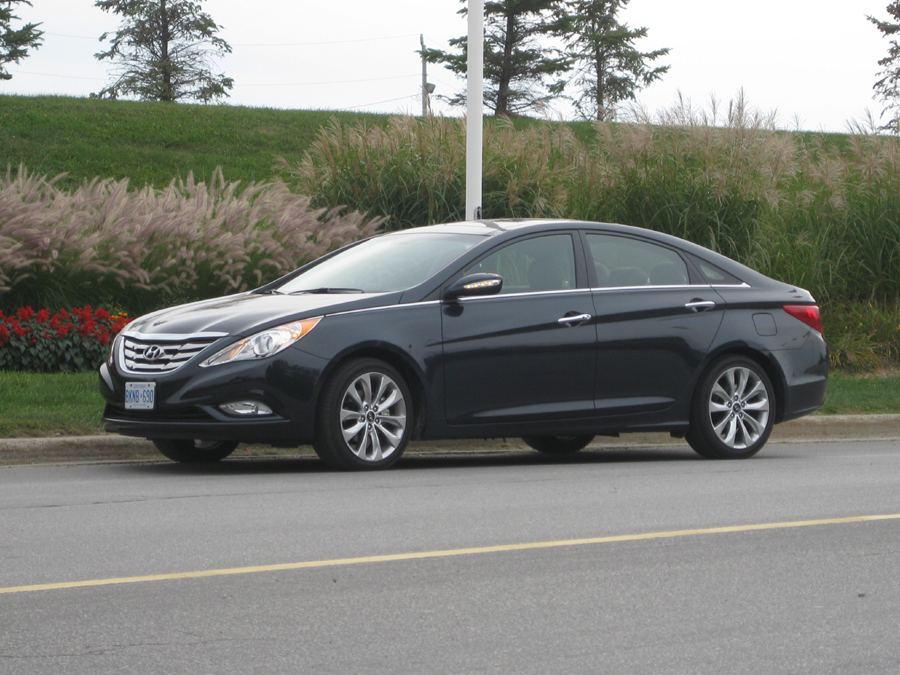 My tester was a veritable beast, packing 274 hp and 269 lb.-ft. of torque with a six-speed automatic transmission and manual switch option. Around town, the 2.0T accelerated smoothly with minimal throttle jerkiness; on the highway, it gathered speed evenly and steadily, which is exactly what you hope for in a well-rounded car. It was all thanks to the direct injection and the twin-scroll turbocharger, which provides the acceleration you’d expect from a V6 while ensuring better fuel economy. The estimated fuel-economy numbers tell the whole story: 9.3 L/100 km in the city, 6.0 L/100 km on the highway.
My tester was a veritable beast, packing 274 hp and 269 lb.-ft. of torque with a six-speed automatic transmission and manual switch option. Around town, the 2.0T accelerated smoothly with minimal throttle jerkiness; on the highway, it gathered speed evenly and steadily, which is exactly what you hope for in a well-rounded car. It was all thanks to the direct injection and the twin-scroll turbocharger, which provides the acceleration you’d expect from a V6 while ensuring better fuel economy. The estimated fuel-economy numbers tell the whole story: 9.3 L/100 km in the city, 6.0 L/100 km on the highway.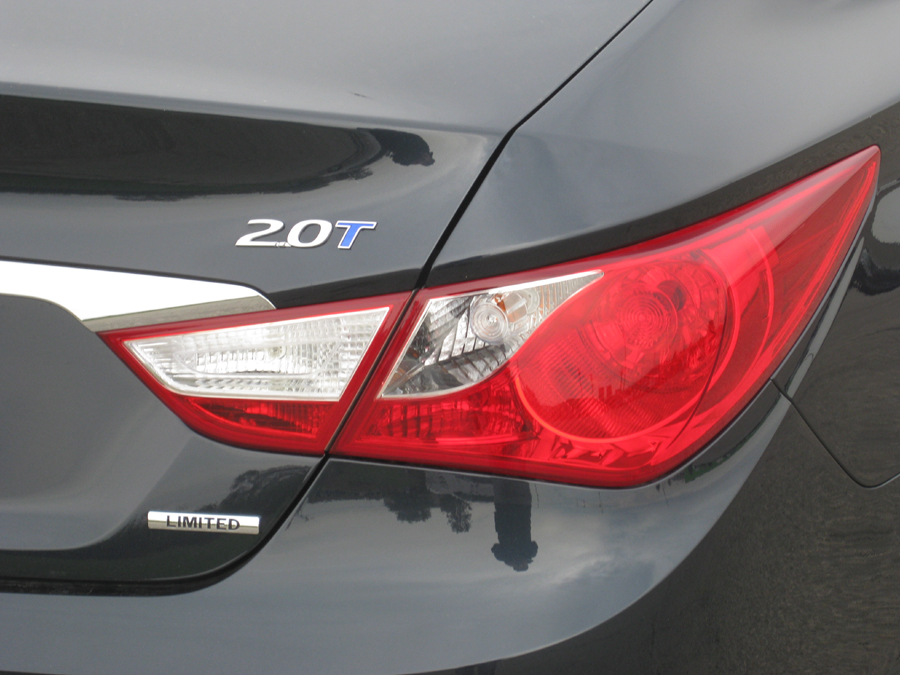

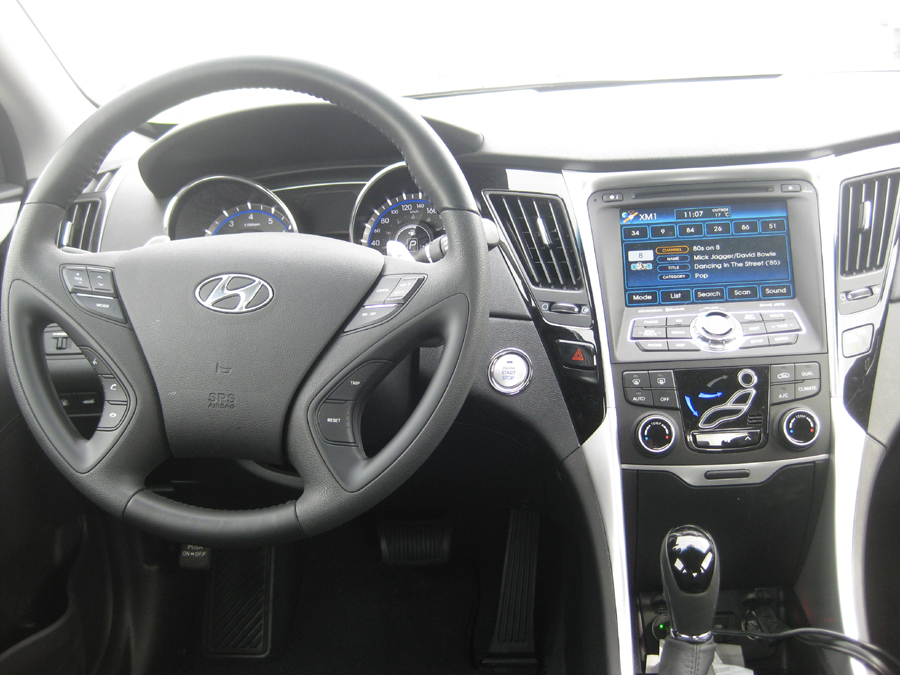
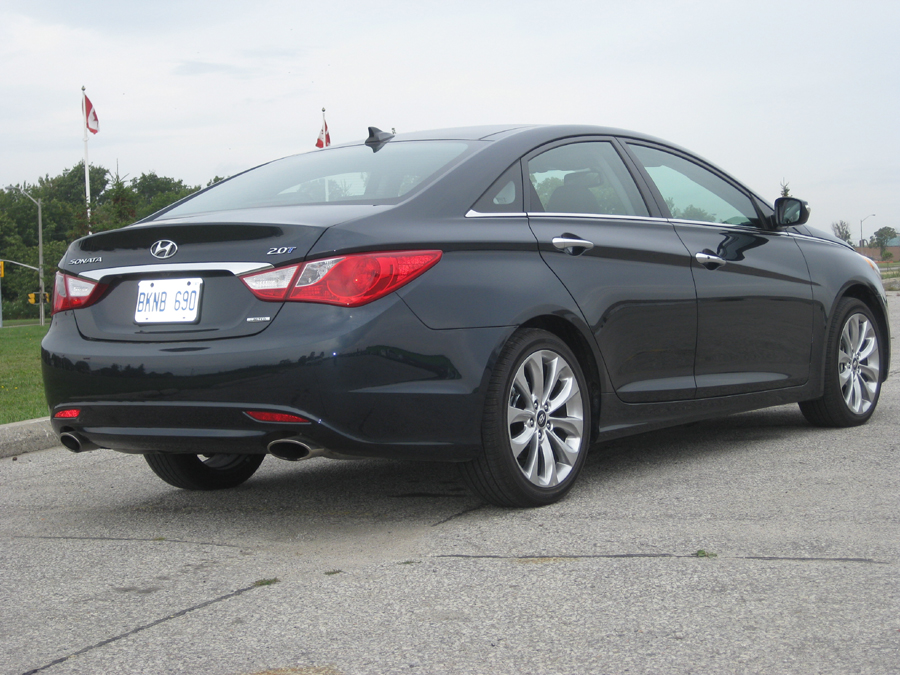
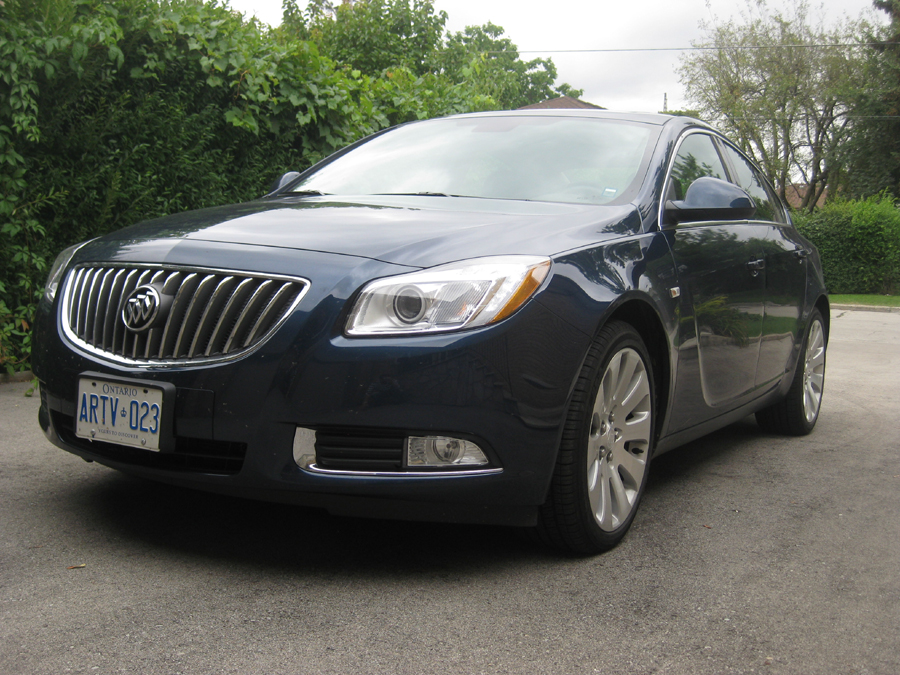 When you think Buick, it’s often images of old men in knee socks peering over the steering wheel or backing out of the drive and into oncoming traffic that come to mind. The name Buick is not ordinarily associated with excitement or fun. However, slowly but surely, General Motors has been rejuvenating the marque, and there is perhaps no finer example of the new spirit than the 2011 Buick Regal. I don’t want to be as clichéd as some of the new Buick commercials, but, simply put, the Regal is a far cry from your father’s car. At first glance, it looks sporty but sophisticated, which is not exactly familiar territory for Buick.
When you think Buick, it’s often images of old men in knee socks peering over the steering wheel or backing out of the drive and into oncoming traffic that come to mind. The name Buick is not ordinarily associated with excitement or fun. However, slowly but surely, General Motors has been rejuvenating the marque, and there is perhaps no finer example of the new spirit than the 2011 Buick Regal. I don’t want to be as clichéd as some of the new Buick commercials, but, simply put, the Regal is a far cry from your father’s car. At first glance, it looks sporty but sophisticated, which is not exactly familiar territory for Buick.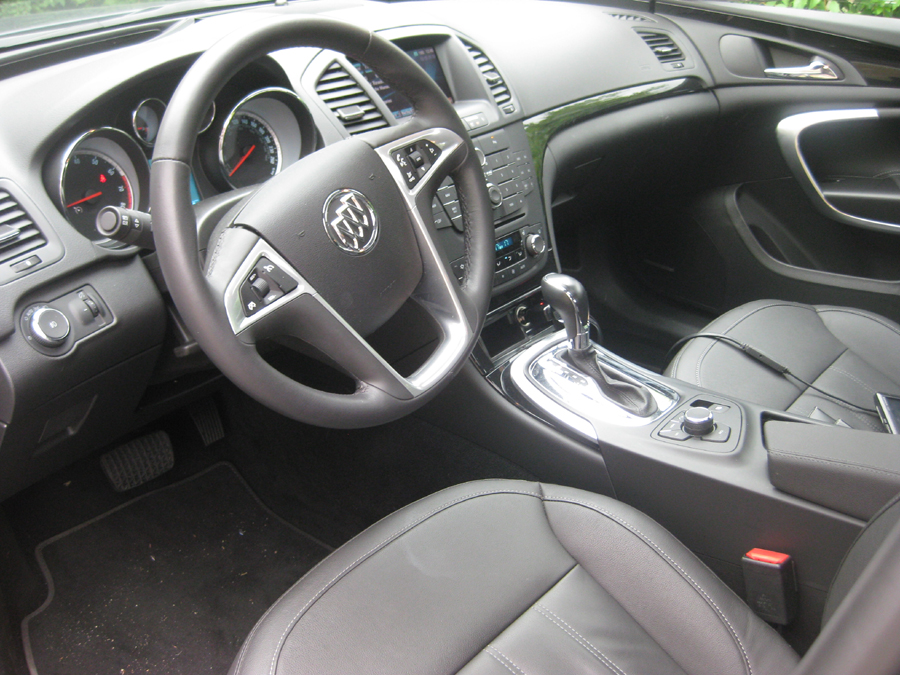 Beyond the center console, the Regal’s interior is striking. The leather seats were plush and added a luxurious touch. The steering wheel was wrapped in leather and the front seats had metallic door-pulls that really popped. Rear-seat passengers enjoy their own air vents and enough legroom to seat two comfortably.
Beyond the center console, the Regal’s interior is striking. The leather seats were plush and added a luxurious touch. The steering wheel was wrapped in leather and the front seats had metallic door-pulls that really popped. Rear-seat passengers enjoy their own air vents and enough legroom to seat two comfortably.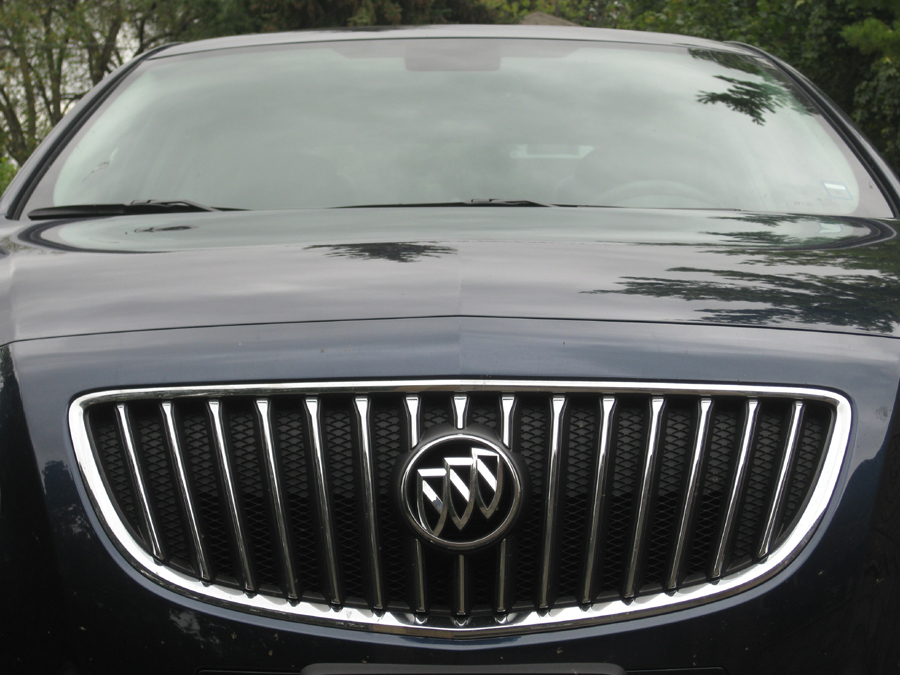 We had occasion to test the Regal’s handling even before crossing the border. Driving in the left-hand lane, I was forced to quickly bend onto the shoulder as another car entered my field of vision while heading straight for the right side of my vehicle. Thankfully I had two cups of coffee in me and was on high alert. Not that I necessarily wanted to test the Regal under true battle conditions, but its agile yet remarkable controlled handling answered without any jerkiness.
We had occasion to test the Regal’s handling even before crossing the border. Driving in the left-hand lane, I was forced to quickly bend onto the shoulder as another car entered my field of vision while heading straight for the right side of my vehicle. Thankfully I had two cups of coffee in me and was on high alert. Not that I necessarily wanted to test the Regal under true battle conditions, but its agile yet remarkable controlled handling answered without any jerkiness.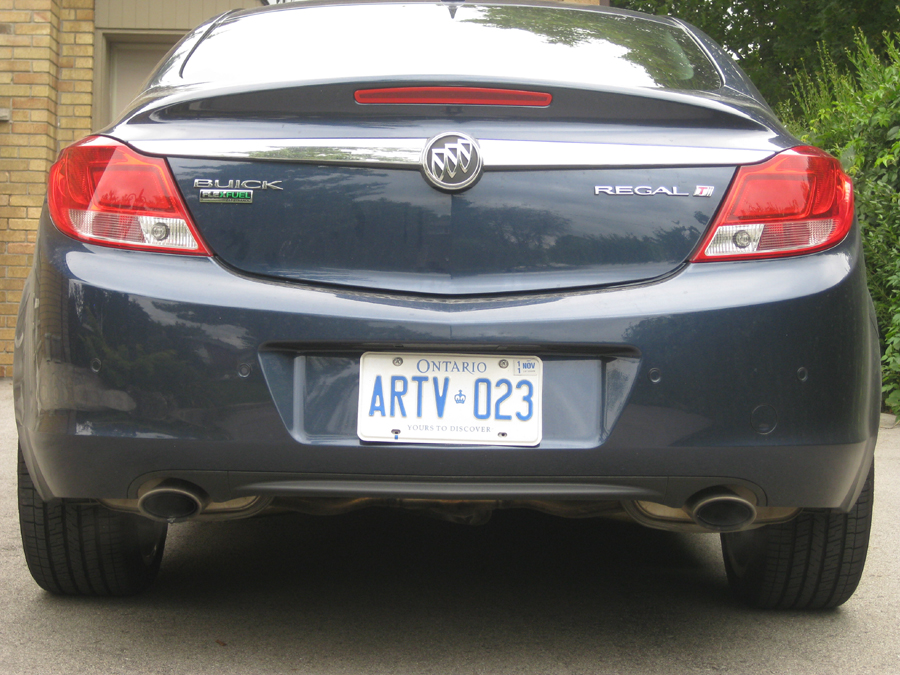 Overall, the drive was peaceful and comfortable, which is about all you can ask for on a long journey. The same could not be said, however, of the Baltimore Grand Prix, which was action-packed and well worth the drive. The turn-out was astounding and the excitement of the crowds was not misplaced: Team Penske’s Will Power took the checkered flag in what was the best race of the year, surpassing even the Honda Indy Toronto. When it was all over, we packed our bags into the Regal’s kingly 402-litre trunk and pointed our bow at Toronto.
Overall, the drive was peaceful and comfortable, which is about all you can ask for on a long journey. The same could not be said, however, of the Baltimore Grand Prix, which was action-packed and well worth the drive. The turn-out was astounding and the excitement of the crowds was not misplaced: Team Penske’s Will Power took the checkered flag in what was the best race of the year, surpassing even the Honda Indy Toronto. When it was all over, we packed our bags into the Regal’s kingly 402-litre trunk and pointed our bow at Toronto.
 The 2012 Volkswgaen Jetta GLI provides sportier performance at a great price.
The 2012 Volkswgaen Jetta GLI provides sportier performance at a great price. 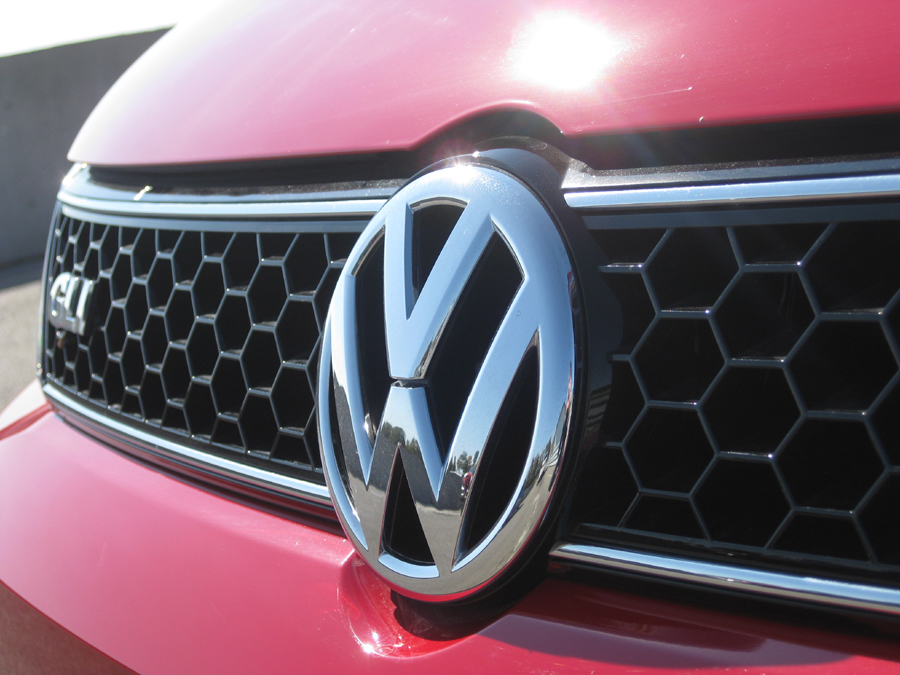 At first glance, the GLI catches your attention with its sleek and sporty look. The first thing that gets a hold of you is the new honeycomb grille that places the GLI badge front and centre. When you get to the back of the vehicle, you will notice smoked tail lights and a twin exhaust. It also has bright red brake callipers, front/rear sport bumpers, side skirts, and 17” alloy wheels to give it that sports car feel.
At first glance, the GLI catches your attention with its sleek and sporty look. The first thing that gets a hold of you is the new honeycomb grille that places the GLI badge front and centre. When you get to the back of the vehicle, you will notice smoked tail lights and a twin exhaust. It also has bright red brake callipers, front/rear sport bumpers, side skirts, and 17” alloy wheels to give it that sports car feel.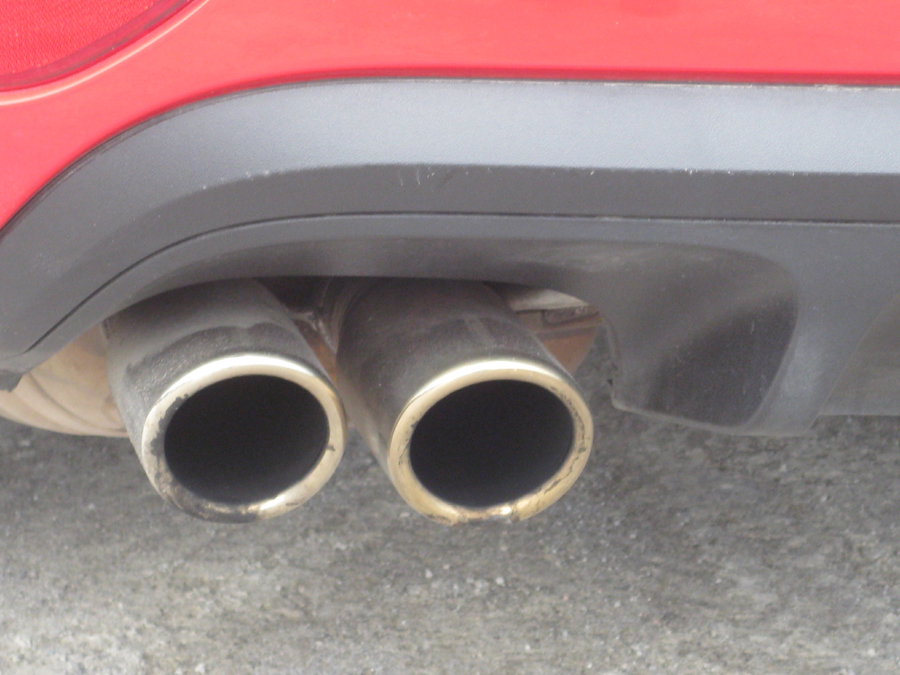
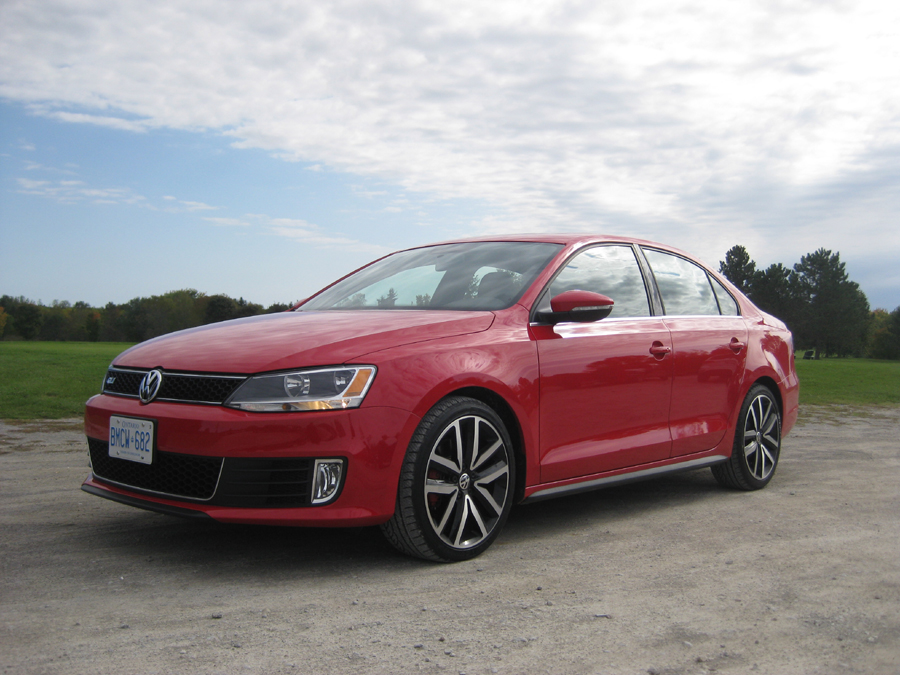 You don’t have to worry about many downgrades when it comes to the GLI as it’s propelled by a 200 horsepower, 2-litre turbocharged four-cylinder engine. It also possesses 207 lb-ft of torque peaking at a low 1,700 rpm, which is hands-down one of the best engines on the market today. For greater stability, the GLI is proud to have a multilink rear suspension instead of the regular Jetta’s torsion-beam rear axle. The torsion-beam needed to be addressed as it raised many eyebrows of Volkswagen owners which caused them to second-guess the newly modelled Jettas.
You don’t have to worry about many downgrades when it comes to the GLI as it’s propelled by a 200 horsepower, 2-litre turbocharged four-cylinder engine. It also possesses 207 lb-ft of torque peaking at a low 1,700 rpm, which is hands-down one of the best engines on the market today. For greater stability, the GLI is proud to have a multilink rear suspension instead of the regular Jetta’s torsion-beam rear axle. The torsion-beam needed to be addressed as it raised many eyebrows of Volkswagen owners which caused them to second-guess the newly modelled Jettas. 
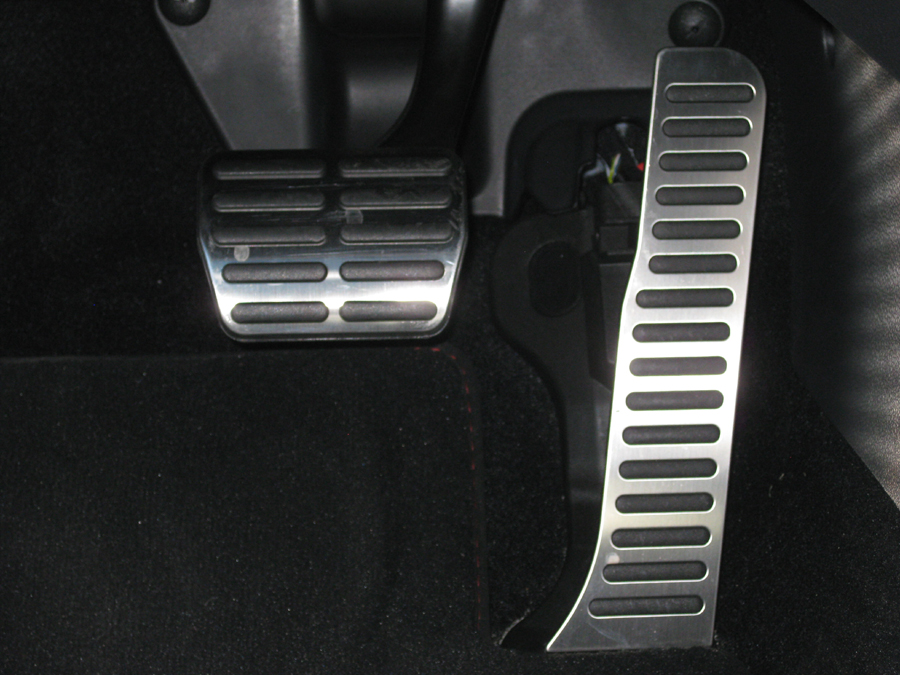 We really got to test the sportiness of the GLI around Mosport International Raceway just north of Bowmanville, Ontario. To top off this fun-filled racing venture, Volkswagen brought in Canadian racing legend Richard Spenard to provide some helpful tips. The one thing I can safely say is that the stability control was working to perfection as I pushed down on those aluminium pedals and swung the GLI around each corner. You can steer with ease into and out of each corner with complete control. It was truly a joy to fully test what it’s capable of doing which you just cannot do driving throughout the streets of Toronto. The GLI compared well with the Mitsubishi Lancer Sportback Ralliart I recently tested, which is one of the top-sporty cars in its segment.
We really got to test the sportiness of the GLI around Mosport International Raceway just north of Bowmanville, Ontario. To top off this fun-filled racing venture, Volkswagen brought in Canadian racing legend Richard Spenard to provide some helpful tips. The one thing I can safely say is that the stability control was working to perfection as I pushed down on those aluminium pedals and swung the GLI around each corner. You can steer with ease into and out of each corner with complete control. It was truly a joy to fully test what it’s capable of doing which you just cannot do driving throughout the streets of Toronto. The GLI compared well with the Mitsubishi Lancer Sportback Ralliart I recently tested, which is one of the top-sporty cars in its segment. 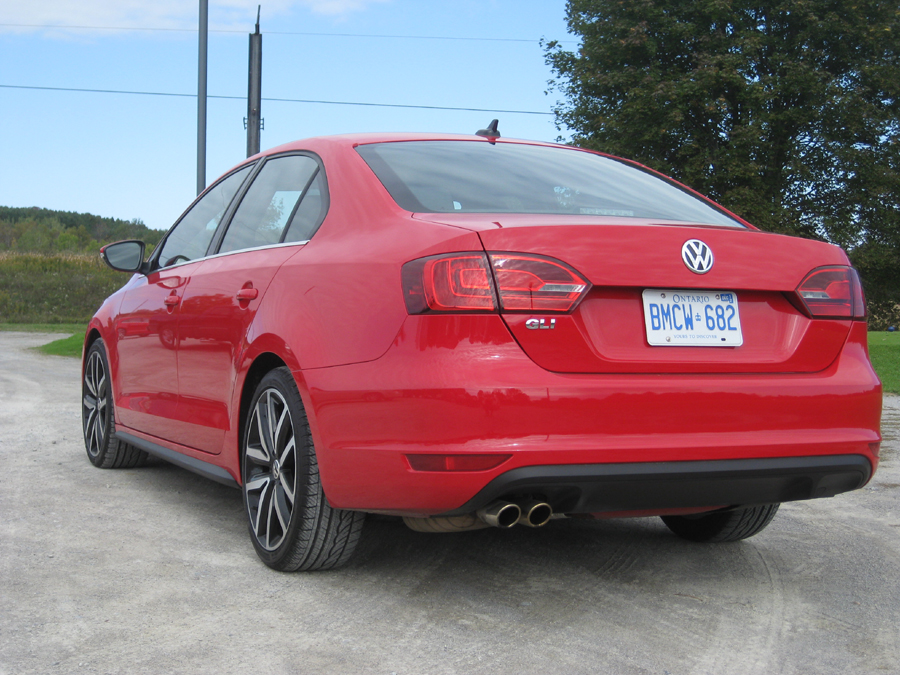
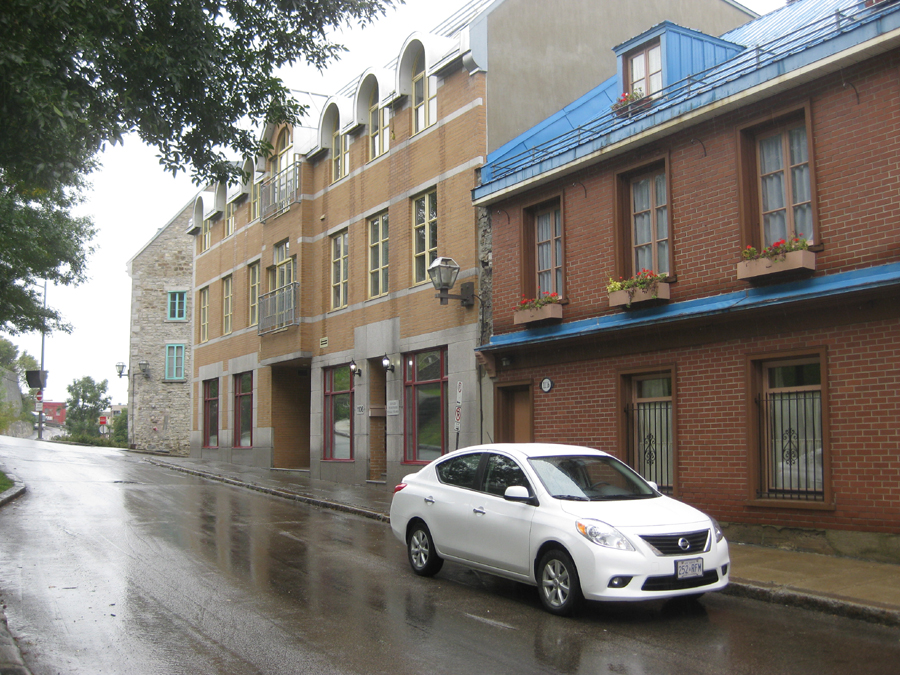 Quebec City, QC - Given the current economic outlook, it’s more important now than ever to make sure that you’re getting bang for your buck, which is why the new 2012 Nissan Versa Sedan may be an ideal choice for those in search of a new set of wheels. I happened to be present at the Versa’s Canadian media launch, which started in downtown Quebec City and through the beautiful Île d’Orléans, as picturesque a venue as any for a test drive. Compact and sporty, the Versa blended in well with the locals as it weaved through narrow streets lined with bakeries, wineries, and chocolatiers.
Quebec City, QC - Given the current economic outlook, it’s more important now than ever to make sure that you’re getting bang for your buck, which is why the new 2012 Nissan Versa Sedan may be an ideal choice for those in search of a new set of wheels. I happened to be present at the Versa’s Canadian media launch, which started in downtown Quebec City and through the beautiful Île d’Orléans, as picturesque a venue as any for a test drive. Compact and sporty, the Versa blended in well with the locals as it weaved through narrow streets lined with bakeries, wineries, and chocolatiers.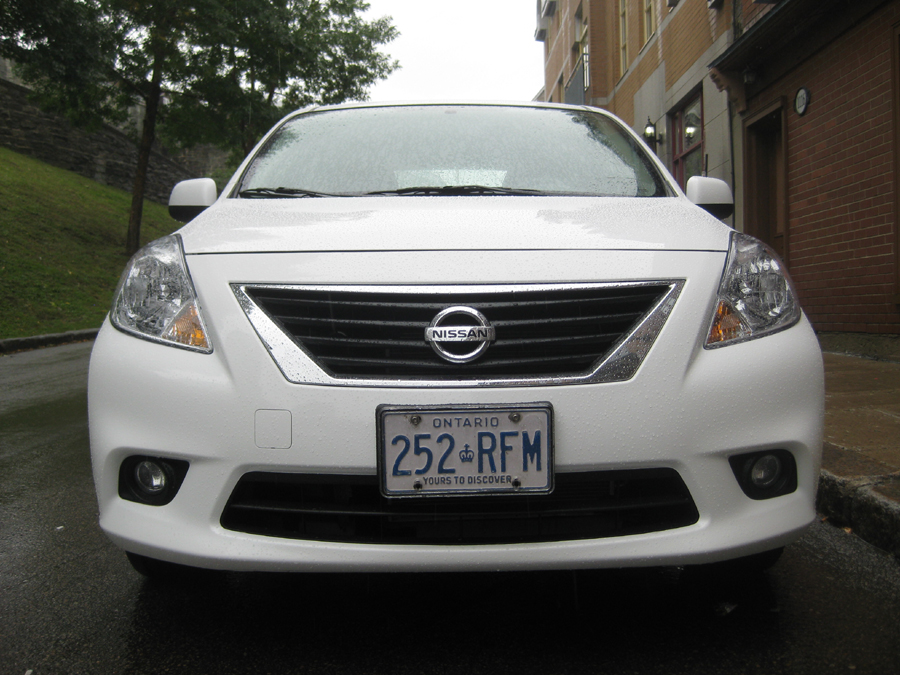 The 2012 Versa Sedan rides on a newly constructed global “V” platform (“V” as in versatile). It will be the first of many Nissan vehicles to use this new platform, which is 68 kg (150 lbs) lighter than the platform it’s replacing. In keeping with this new weight-loss regimen, the 2012 is 30 mm lower and 15 mm shorter than its stockier predecessors. It’s also the first Nissan car to showcase the marque’s new signature grille, which shines brilliantly with its chrome trim. None of these changes is especially conspicuous in itself, but, when viewed as a whole, they make for a far more stylish exterior design than was typical previously.
The 2012 Versa Sedan rides on a newly constructed global “V” platform (“V” as in versatile). It will be the first of many Nissan vehicles to use this new platform, which is 68 kg (150 lbs) lighter than the platform it’s replacing. In keeping with this new weight-loss regimen, the 2012 is 30 mm lower and 15 mm shorter than its stockier predecessors. It’s also the first Nissan car to showcase the marque’s new signature grille, which shines brilliantly with its chrome trim. None of these changes is especially conspicuous in itself, but, when viewed as a whole, they make for a far more stylish exterior design than was typical previously.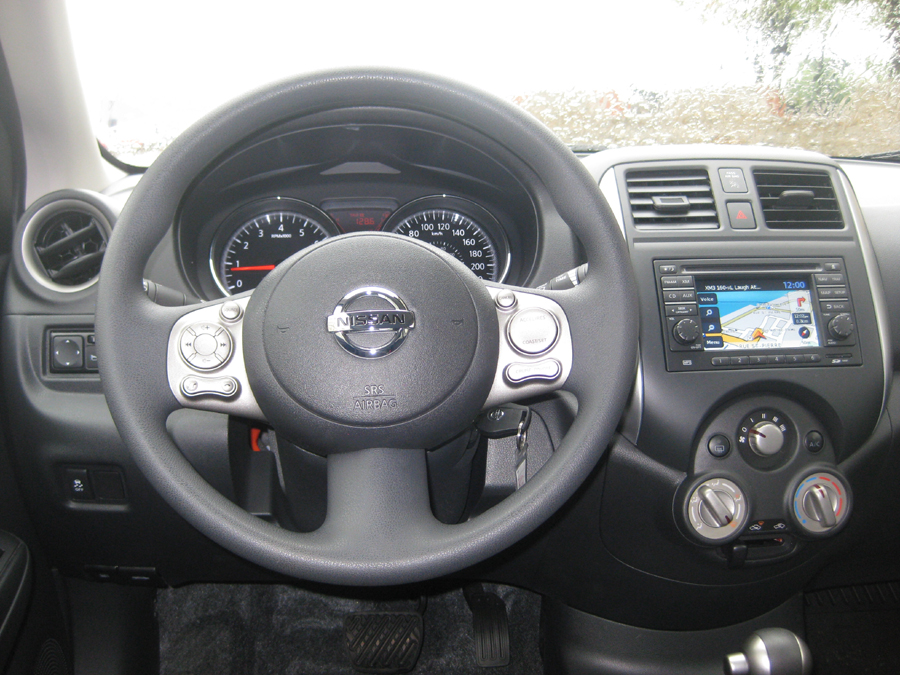 The charcoal-grey dashboard is a little primitive, which is scarcely surprising given the car’s price, but the radio, heating, and assorted other knobs are all logically situated. My tester was a Versa SL-CVT that came equipped with navigation, XM Radio, Bluetooth, and USB/iPod connectivity, and that topped out at $16,298.
The charcoal-grey dashboard is a little primitive, which is scarcely surprising given the car’s price, but the radio, heating, and assorted other knobs are all logically situated. My tester was a Versa SL-CVT that came equipped with navigation, XM Radio, Bluetooth, and USB/iPod connectivity, and that topped out at $16,298.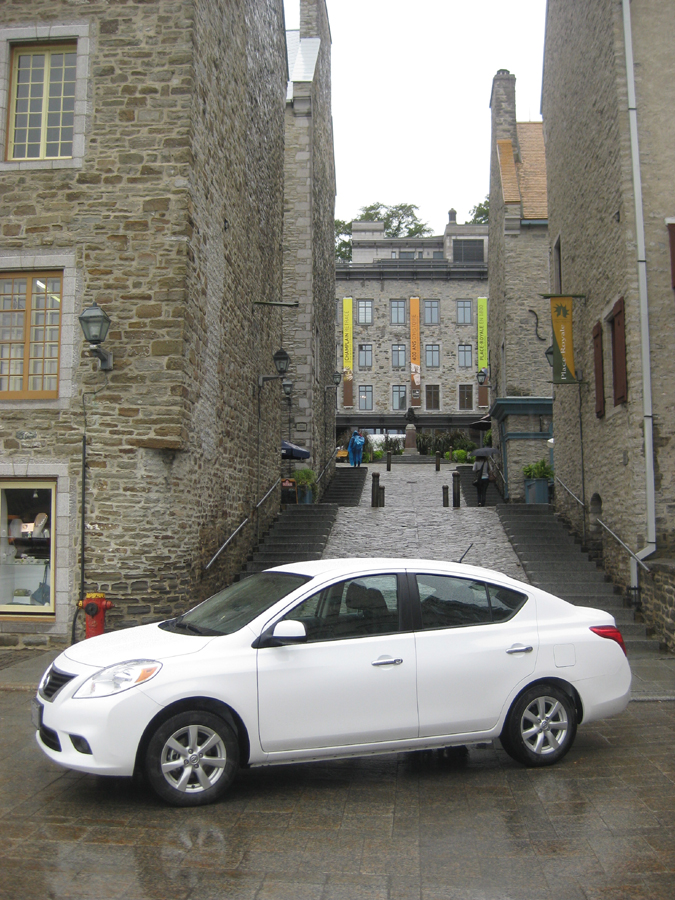 Whatever you might make of its price, there’s no doubt that the Versa Sedan is a pleasure to drive. It runs on a 1.6-litre 4-cylinder engine that is rated at 109 hp and 107 lb-ft of torque. The engine uses two injectors per cylinder, which allows for a wider injection of fuel. The fuel economy is reported at 6.7 L/100 km in the city, 5.2 L/100 km on the highway, and a class-leading 6.0 L/100 km combined with the CVT (continuously variable automatic transmission), which is available in the SV and standard in the SL.
Whatever you might make of its price, there’s no doubt that the Versa Sedan is a pleasure to drive. It runs on a 1.6-litre 4-cylinder engine that is rated at 109 hp and 107 lb-ft of torque. The engine uses two injectors per cylinder, which allows for a wider injection of fuel. The fuel economy is reported at 6.7 L/100 km in the city, 5.2 L/100 km on the highway, and a class-leading 6.0 L/100 km combined with the CVT (continuously variable automatic transmission), which is available in the SV and standard in the SL.